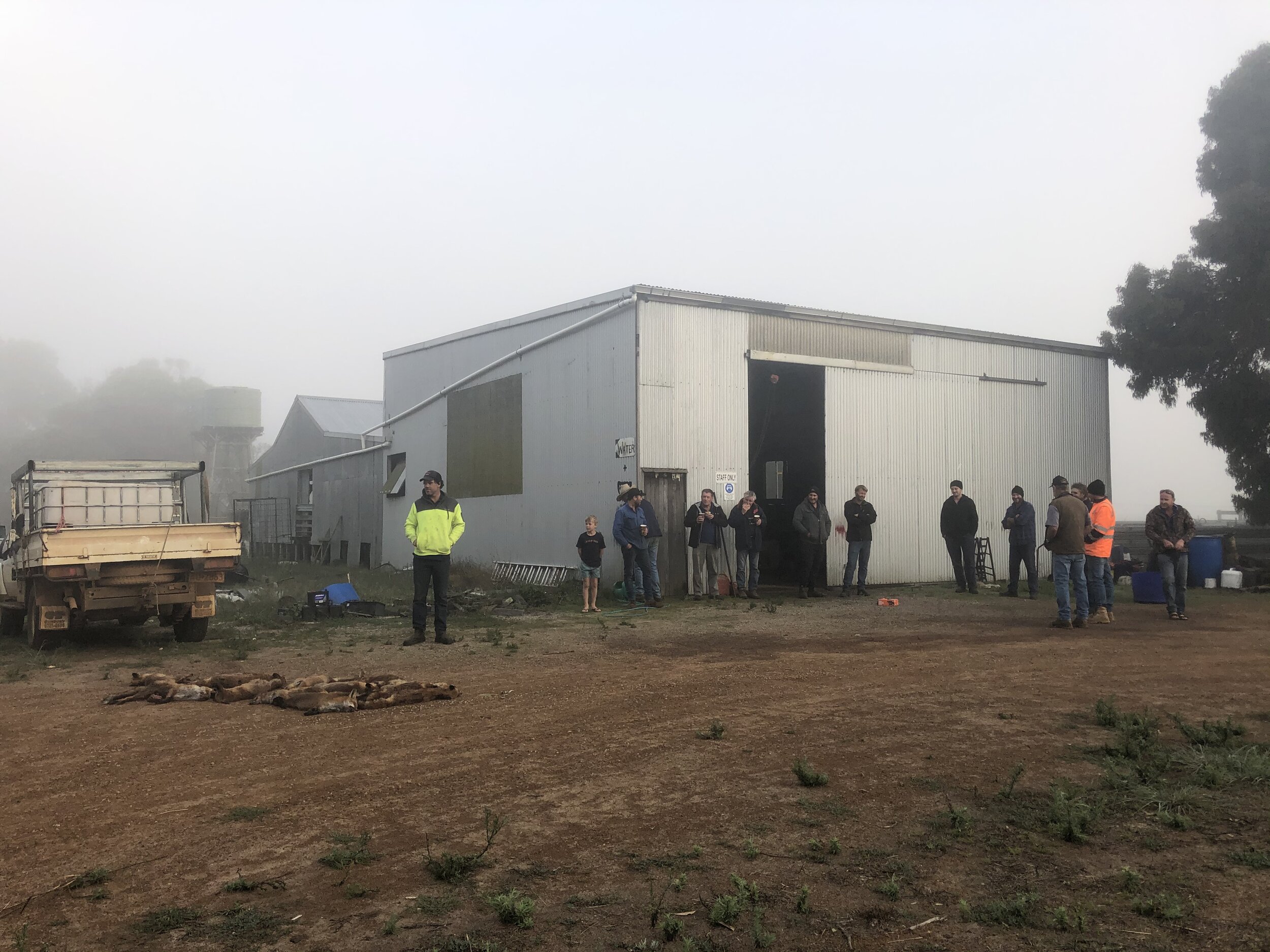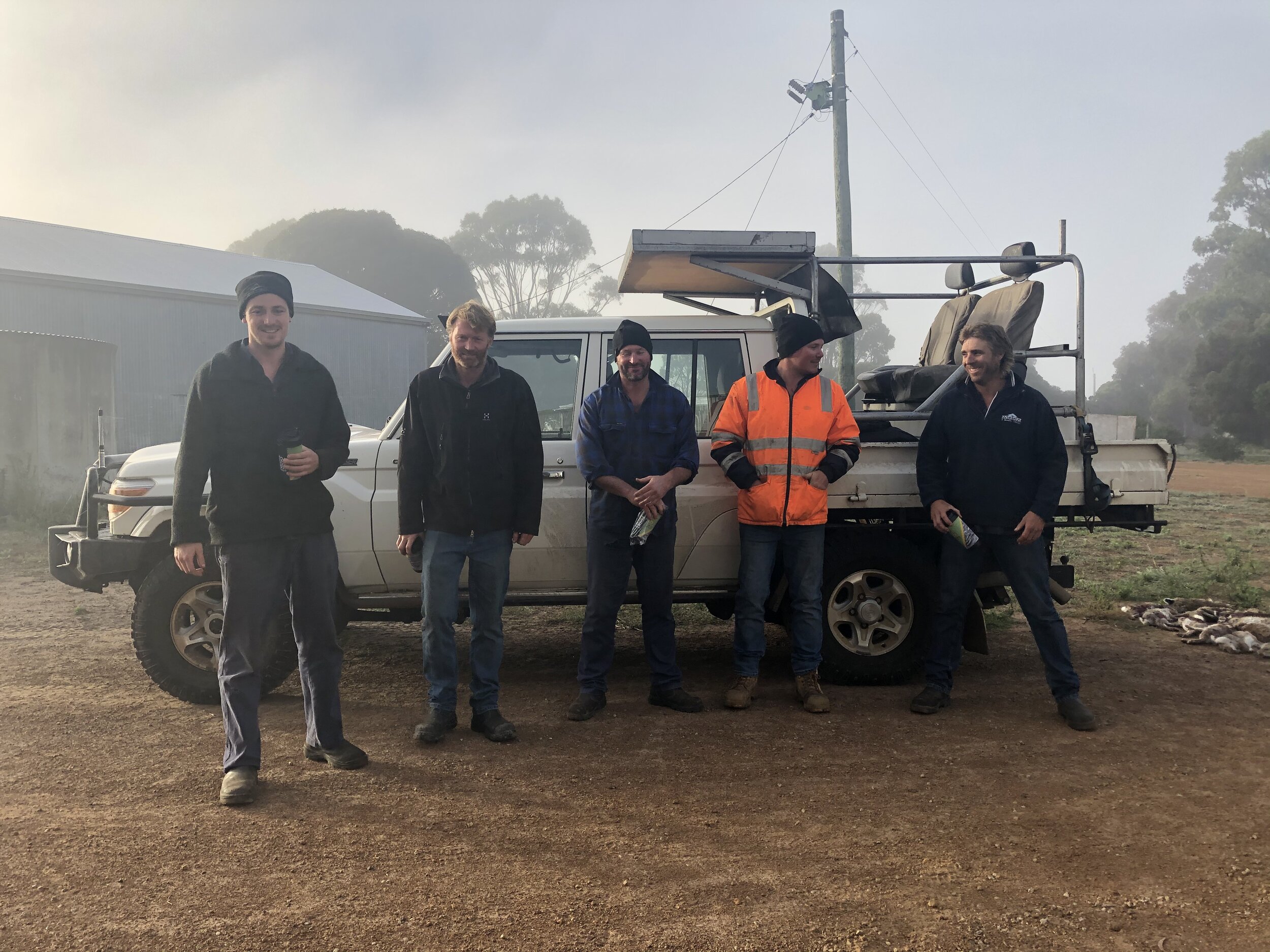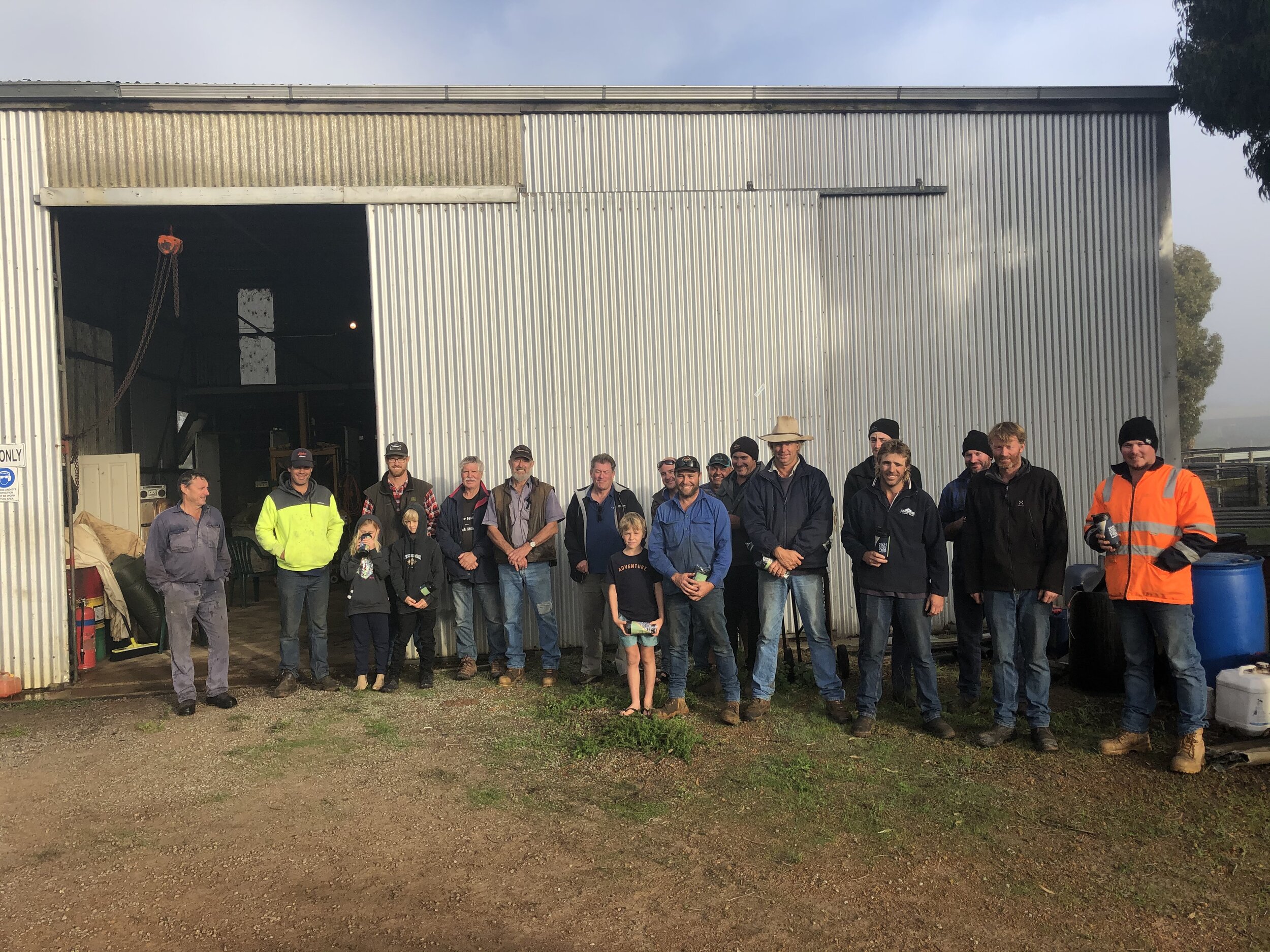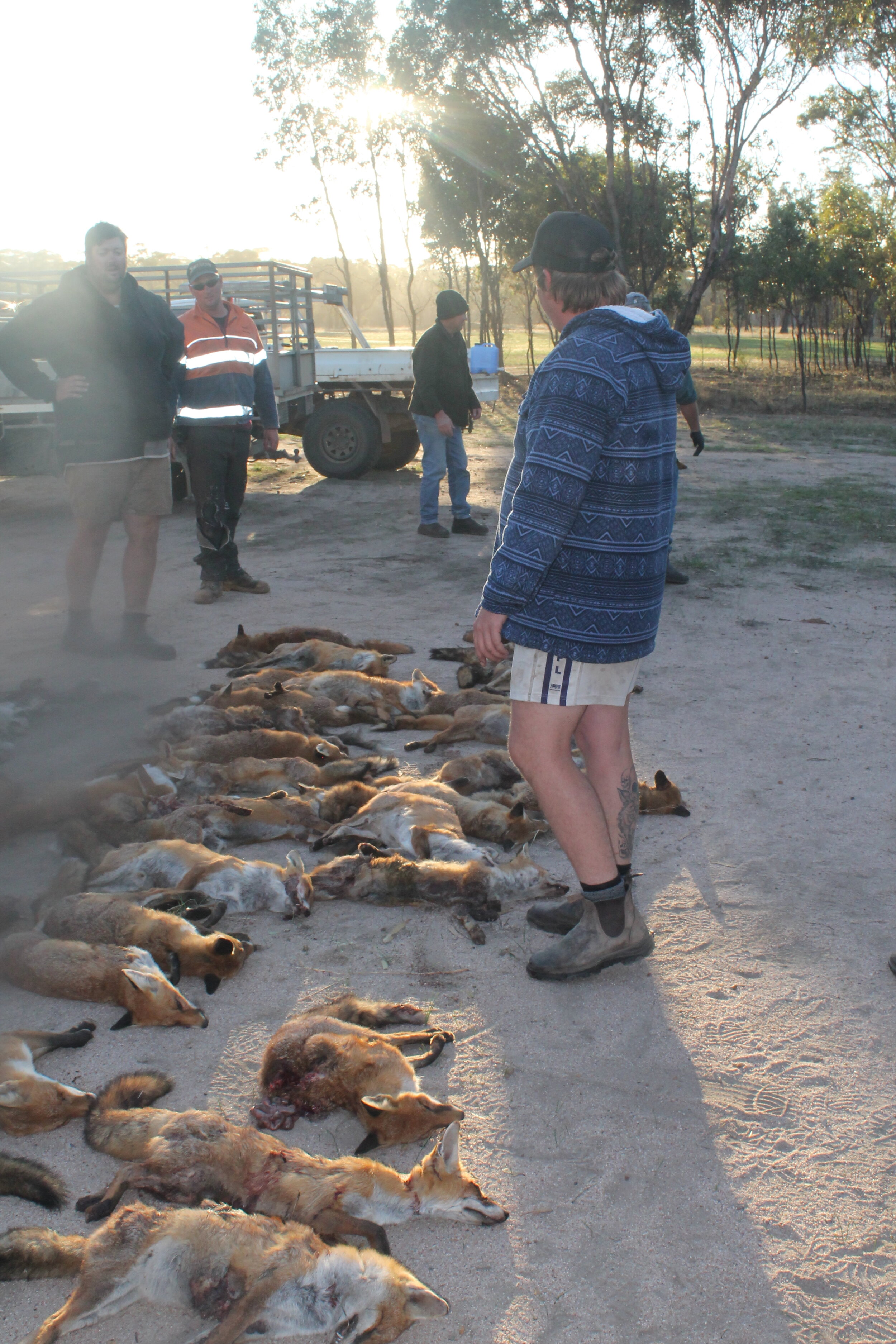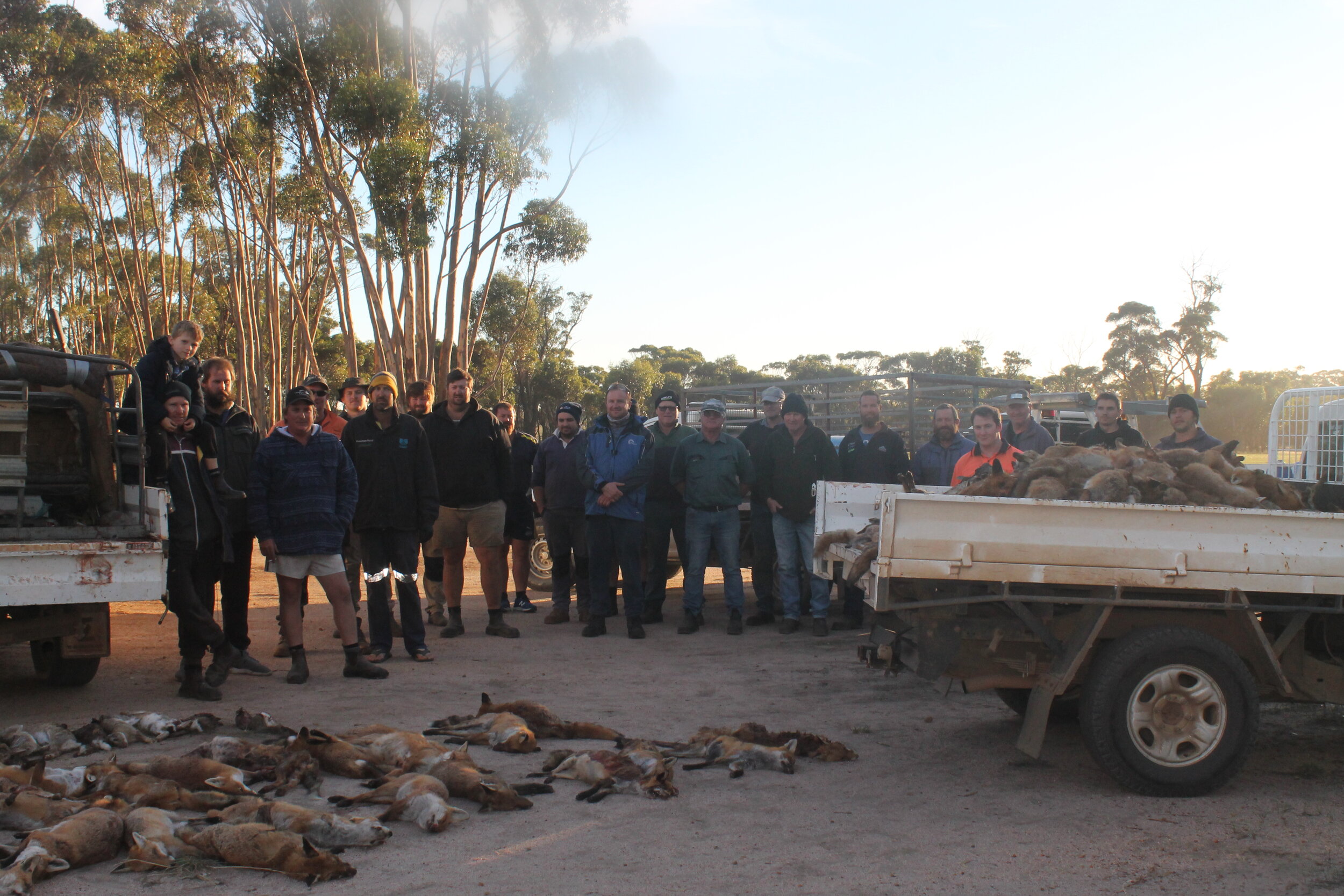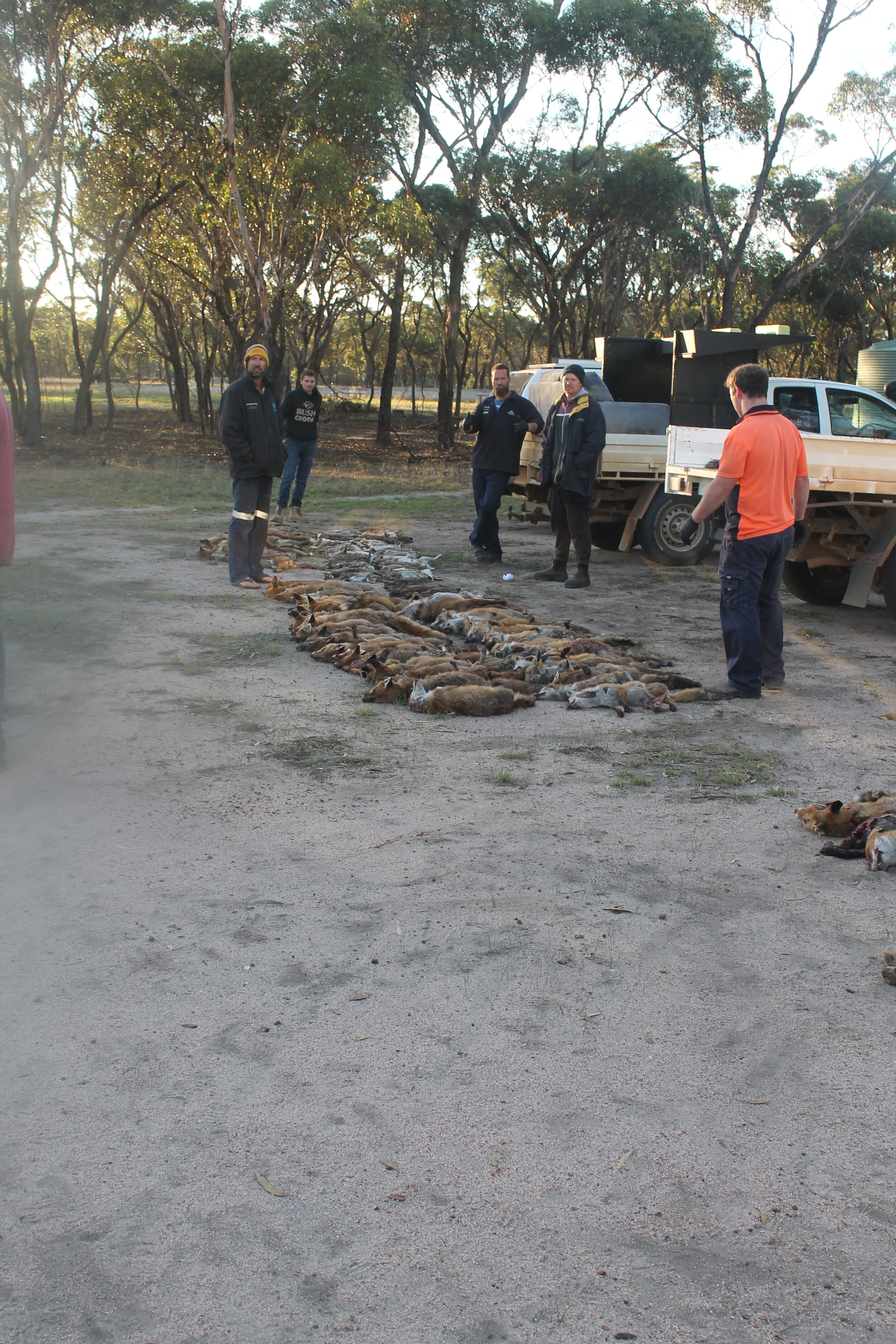Spring Field Day 2021
This year’s Spring Field Day was held on 8th September - read more here
This year’s Spring Field Day was held on 8th September in the Jacup area. A perfect day for spending outside looking at crops, we had c 60 local farmers plus industry in attendance. We kicked the day off with a bacon & egg brekkie sponsored by Lawson Grains at the fantastic facility that is the Jacup Fire Shed.
We heard from Ian Donaldson from Rabobank who gave an insight into current rural land prices which provided plenty of discussion and food for thought. Interesting to hear that the WA market is still underdone relative to the East Coast.
From there, we jumped on the bus or into utes and headed down to Mal & Mel Smith’s farm on Quiss Road. Mal talked about his experience in seeding using the Mic Fels’ designed Alpha Disc2.0. The disc seeding units were bolted onto Seedhawk frame. This year was his first seeding program using the units. He had been looking at changing from a tyne to a disc system for some time and had found the conversion to the Alphadisc system to have worked really well in his cropping system.
We then headed north to Brad & Jess Bailey’s farm on Fence Road where we looked at some Nutrien trials in barley, as well as discussing variable rate inputs with insights provided by local agronomists Kyran Brooks (Foreman Rural, Nutrien Ag) and Graham Laslett (Combined Agronomic Services).
The next stop was at Viridis Ag “Amarinya” on Jacup North Rd where Ops Manager James Lyall took us through their Illabo wheat crop and Jeremy Curry of DPIRD Esperance discussed different wheat varieties and some of the trials and research he is involved with along the South Coast.
Back at the Fire Shed, after a delicious lunch provided by JDHS P&C, Svetlana Micic, DPIRD Albany, discussed a few insect-related issues and research she is involved with. This included red legged earthmite research, and insect and vertebrate pests to look out for, such as Russian wheat aphid, mice and plague locusts.
Mic Fels then joined us via Zoom to discuss some technical aspects of his disc system and we then heard from Kyran Brooks and Graham Laslett on a range of agronomic issues for this season and heading into 2022. A key take home message was the importance of forward planning inputs but also ensuring timeliness of operations.
We then ended the day with CBH – Rodney Scott (Business Relationship Manager for Albany Port Zone South) encouraged farmers to attend their local bin meetings ahead of the expected big harvest, and Trading Manager (Protein & Oilseeds) Dane Robertson gave some insights into canola prices and current market influencers in general. We also thank CBH for once again sponsoring the sundowner.
Thank you to everyone who contributed to the day – all attendees, host farmers, speakers, sponsors, Kemp & Bev Brooks for the bus, and Jacup BFB for the use of the shed.
Fitzy Fox Shoot 2021
Our 2021 Fitzy Fox Shoot was held on Friday the 19th of March.
We had a massive response this year with 64 men and women registered between the Jerramungup and Bremer Bay shoots which made for our biggest Fox Shoot event in quite a few years.
In a combined effort we managed to cull 190 foxes, four cats and 186 rabbits from within the Jerramungup shire.
Weather conditions for the Jerramungup Shoot couldn't have got much better with a walm balmy night making it comfortable stalking weather for both foxes and shooters alike. Whilst only 100kms away Bremer Bay teams struggled on feral animal numbers with the fog rolling in very early on.
At 6am Saturday morning, all teams gathered at the tally count locations for a cooked breakfast (sponsored by Lawson Grains) and to see who our winners were for 2021.
Jerramungup–nine teams entered.
Total foxes – 152. Total cats – 4. Total rabbits – 101.
Winning team (reigning champions)
Lead Spreaders West (213 Points)
Runners up– Fox Tamperers (212 Points)
Most cats – Tie between Lead Spreaders East (2) and Agent orange (2)
Most rabbits – Bunny Busters (56)
Most kms Travelled – Firing Blanks ( 289 kms)
Biggest fox– Fox Vaccinators (7.5 kgs)
Biggest cat– Lead Spreaders East (6.5 kgs)
Best Rigged out ute– Bunny Busters
Bremer Bay– five teams entered.
Total foxes – 38. Total cats – 0. Total rabbits – 85.
Winning team– Night Riders (132 Points)
Most rabbits– Night Riders (62)
Most kms Travelled– Night Riders (281kms)
Best Rigged out ute– Big Bang Theory
Once again our Shoots were registered with Red Card for Rabbits and Foxes, where $5 for every fox and cat culled will be donated to the Regional Men’s Health Initiative.
Thank you to all of our participants who took part this year. It’s a huge and very exhausting effort and your dedication to this very worthy cause does not go unnoticed.
If you have any feedback on this year’s event or ideas for future shoots please email Jess at communications@fbg.org.au
2020 Spring Field Day
Read on for a wrap up of our 2020 Spring Field Day, held on Wednesday 9th September
2020 Spring Field Day Wrap Up
The 2020 FBG Spring Field Day was this year held on Wednesday 9th September, attended by around 50 farmers and industry. It started with a global grains and livestock markets update from Cheryl Kalisch-Gorden and Angus Gidley Baird of Rabobank (via Zoom). Thank you to Phil Thompson from Rabobank Albany for facilitating this successful technological hook up.
From there, we headed out to the GRDC National Variety Trials (Wheat & Barley), hosted once again by Trent & Tina Parsons. We were led through the NVTs by Pip Payne from Living Farm (this year’s contractor) and Georgia Trainor from Intergrain.
We then hopped back on the bus with a yummy morning tea provided by the Gairdner P&C and headed down to Lawson Grains, Jerry South, for a presentation on Precision Ag in Practice from farm manager Andrew Wylie. The site we stopped at focussed on a variable seeding rate trial, but Andrew covered off on how he uses ag data and incorporates it into the business on a practical level. Adjacent to this particular site was an area that had been worked by an H4 Reefinator with a seeding bar then put through it.
Heading further south, we then visited Michael Swarbrick’s farm on Meechi Road where he has been trialling deep ripping on his gravelly sands. We stopped firstly in a lupin paddock which had traditionally been an underperforming one with non-wetting issues. He had also deep ripped a significant portion of the rest of this farm, including a barley paddock and some canola. Responses had been excellent, and it was interesting to note that despite some setbacks following strong winds at seeding, crops were well advanced and looking healthy. We had excellent insight provided also by DPIRD’s Jeremy Lemon.
We were by this time pushing our schedule, and we unfortunately did not visit the second site in Mike’s barley paddock.
After a delicious lunch (thanks again to Gairdner P&C) at Richard Surridge & Reaghan Shalders farm between Gairdner and Boxwood Hill, we heard from the very impressive Sue Middleton, with her Moora Citrus and Rural Edge hats on. We heard a bit about her family’s journey into diversification, including their adoption of applicable agtech, as well as increasing agtech capabilities in Sue’s role with Rural Edge. A high calibre workshop will be rolled out across WA in 2021.
We then hopped back on the bus and crossed the road to Colin Green’s farm where we had a look at a site where Colin had been spreading on-farm clay. Colin has converted a mixed farm to a 100% cropping farm in the 3 years since moving from further north in the wheatbelt. With some challenging seasons, he has been setting up the farm with some significant soil amelioration projects using machinery that he has available, such as a plozza plough and his road grader. This generated a lot of discussion amongst farmers present, and again we heard from Jeremy Lemon’s extensive experience.
Back to the shed, we then heard from Johnny Inferrera from McIntosh Distribution about the Integrated Harrington Seed Destructor (iHSD) which again generated plenty of questions from farmers present.
We then heard more on agtech from Philip Honey, Smart Farm Coordinator with Stirlings to Coast Farmers. It was really interesting to hear of some of the projects that he is involved with in that region, as well as some of the potential for expansion and further RD&E
We then finished the day with an update from Rodney Scott and Suzanne Butter of CBH Group, before enjoying a sundowner also sponsored by CBH.
We would like to thank all of the day’s presenters for their input, our host farmers, our sponsors, visiting industry representatives and of course our local farmers for attending. We hope you enjoyed the day, found it relevant and had something to take home to your own business.
We would also like to note that an email was sent around to those who registered to attend with some presentations and further information. If there is anyone else who would like this sent out, please get in touch with Maddy Wylie on 0421 645 410 or at soilprojects@fbg.org.au.
Fitzy Fox Shoot 2020
Friday the 20th of March 2020 saw 54 men venture out on night of feral animal control, once again aiming to make a significant impact on the fox, cat and rabbit numbers within our shire. In light of the situation with COVID-19 at that time, we put a few extra precautions in place and deemed the Fitzy Fox Shoot safe enough to go ahead.
2019 Spring Field Day
On a warm day in mid-September (Tuesday the 17th to be precise!), we held our annual Spring Field Day. The day started off with an unexpected power outage at the CRC a set-back which our presenter from Rabobank, Craig Matthews, was able to carry off with aplomb as he discussed rural land values.
From there, we headed out to the paddock at Trent and Tina Parsons, where we looked at the 2019 GRDC National Variety Trials for wheat and barley. These were presented by Georgia Trainor of Intergrain, and Dion Bennett of AGT Breeding, and supported by the Kalyx trial management team.
From there, we moved to 2 of the Landmark trials being run in the Shire this year. The first was hosted by Nathan & Wendy Brown adjacent to the aerodrome. This very interesting trial looked at different grazing options and how much food could be produced from a given variety. The other trial was hosted by Viridis, Tantanoola, just to the west of town and looked at some new pre-emergent chemical options which will add to farmer options. Both trials were enthusiastically presented by Kyran Brooks, and Landmark trials coordinator Brad Westphal.
We then travelled to south Needilup to look at Pete & Jolene Daniel’s RM4 vetch, as well as their K-Hart disc seeder and some reveg which was seeded in the same paddock earlier in the year. The RM4 was seeded in early April and had kicked into gear with some impressive biomass evident on the day. The Daniel’s had been very happy with their seeding program this year, and the performance of their newly purchased disc seeder. They have found it hugely beneficial in seeding directly into pasture paddocks in particular. Geoff Woodall took us through the reveg site which is aiming to rehabilitate some salty country along a creekline. One of the aims is to plant native options that may also have some strategic grazing opportunities, particularly in drier years.
After a delicious lunch provided by the Jerramungup DHS P&C (particular thanks to Tina Parsons, Nikki Carthew and Jess Bailey), we headed out to look at a different vetch option at Wade Brown’s. Wade has been a fan of vetch for many years, predominantly to fill a feed gap and because of its reliability in their mixed farming system. From there, we looked at Nathan Brown’s sheep feedlot set up (very efficient!) which provoked lots of discussion and tyre kicking.
It had been a pretty warm day (around 29-30C), so we were then glad to head back to the Needilup Pavilion for our afternoon session.
We were lucky enough to have a presentation from Owen Hayes-Thompson, a mixed farmer from Bruce Rock who faces many of the same issues in his low to mid rainfall environment. It was fantastic to have an outside perspective and to hear how similar (and different) problems are approached.
In keeping with this year’s livestock focus, we then heard from Mark Allington who presented on behalf of AWI The Sheep’s Back, looking at what the top sheep producers are doing.
We ended this part of the day with a farmer panel which concentrated on the future of farming and opinions on different technologies, social media, animal activists, and many other topics.
Finally, the Department of Water & Environmental Regulation arrived to give an update on community water storages in the area, particularly as we continue not to have received significant run-off rain events. Also, they updated us on the Emergency Farm Water Rebate Scheme, and assured us that the applications from the previous financial year were being finalised.
After a day jam-packed full of information, we ended the day with a sundowner sponsored by Lawson Grains, with a keg of FBG’s own Biosphere Brew (Bay to Bush) being supplied as a taster of what we could expect for the keenly anticipated Dancing in the Dirt Pre-Harvest Gala Ball. The sausage sizzle was sponsored by CBH.
Fitzy Fox Shoot 2019
On Friday the 5th of April 2018, 44 dedicated men adventured out on their surrounding properties to take part in our annual Fitzy Fox Shoot in the hopes of making a big impact on the feral animal numbers in our shire.
On Friday the 5th of April 2018, 44 dedicated men adventured out on their surrounding properties to take part in our annual Fitzy Fox Shoot in the hopes of making a big impact on the feral animal numbers in our shire.
It was an extremely cold night for all involved but fortunately there was minimal fog this year, which allowed most teams to continue throughout the night.
At 6am Saturday morning, all teams gathered at the tally count locations for a cooked breakfast (sponsored by Lawson Grains), cup of tea and to see who our winners were for 2019. There were many great prizes up for grabs this year! Including Fitzy Fox Shoot shirts for the winning teams (sponsored by Coromandel Poll Merino Stud).
There were seven teams entered for the Jerramungup shoot. With the winning team culling a whopping 64 Foxes for the night. Total number of foxes culled in the Jerry Shoot was 137 Foxes, 9 Cats and 59 rabbits.
Bremer Bay entered two teams, with the winning team culling 23 Foxes for the night.
In total in the Bremer Bay area, 41 foxes and 48 rabbits were shot.
Between the two shoots (Jerramungup and Bremer Bay) a total of 178 Foxes, nine cats and 107 rabbits were culled.
We again registered with Red Card for Rabbits and Foxes, where $5 for every fox and cat culled will be donated to a very important cause. This year the money will be donated to the Regional Men’s Health Initiative.
Thank you to each and everyone of you who took part this year. It’s a huge and very exhausting effort, your dedication to this very worthy cause certainly does not go unnoticed.
It was great to see a few new faces this year too, we hope to see you all return in the years to come.
We would like to say a massive Thank You! To every single one of our sponsors for your ongoing support as without you events like this would not be possible.
We would also like to acknowledge Cheryl Webb who was a long time supporter of the Fitzy Fox Shoot. Cheryl donated a fuel voucher every year for as long as any of us can remember. In her memory and in appreciation, this year we donated the voucher on her behalf.
If you have any feedback on this year’s event or ideas for future shoots please email Jess at communications@fbg.org.au
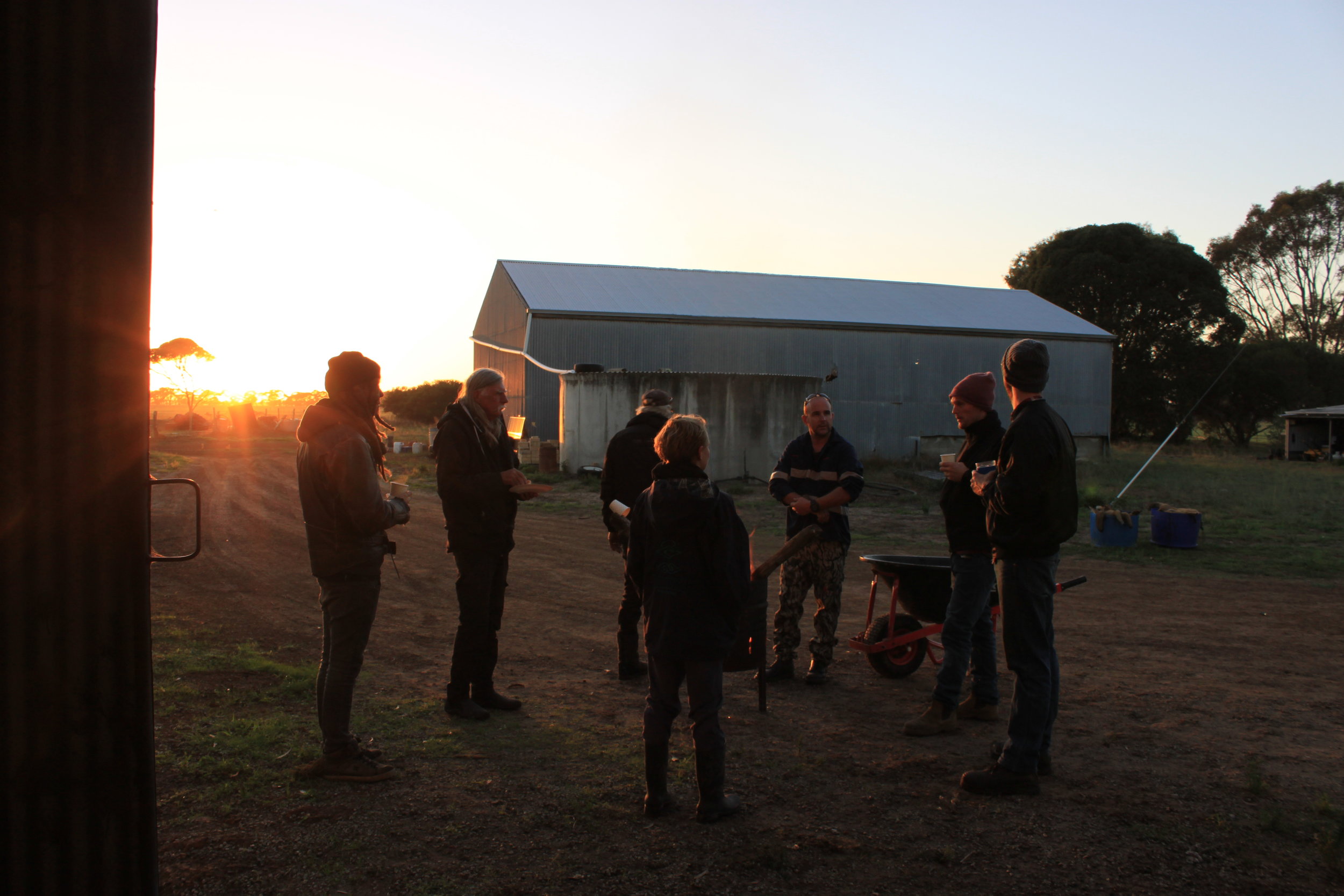
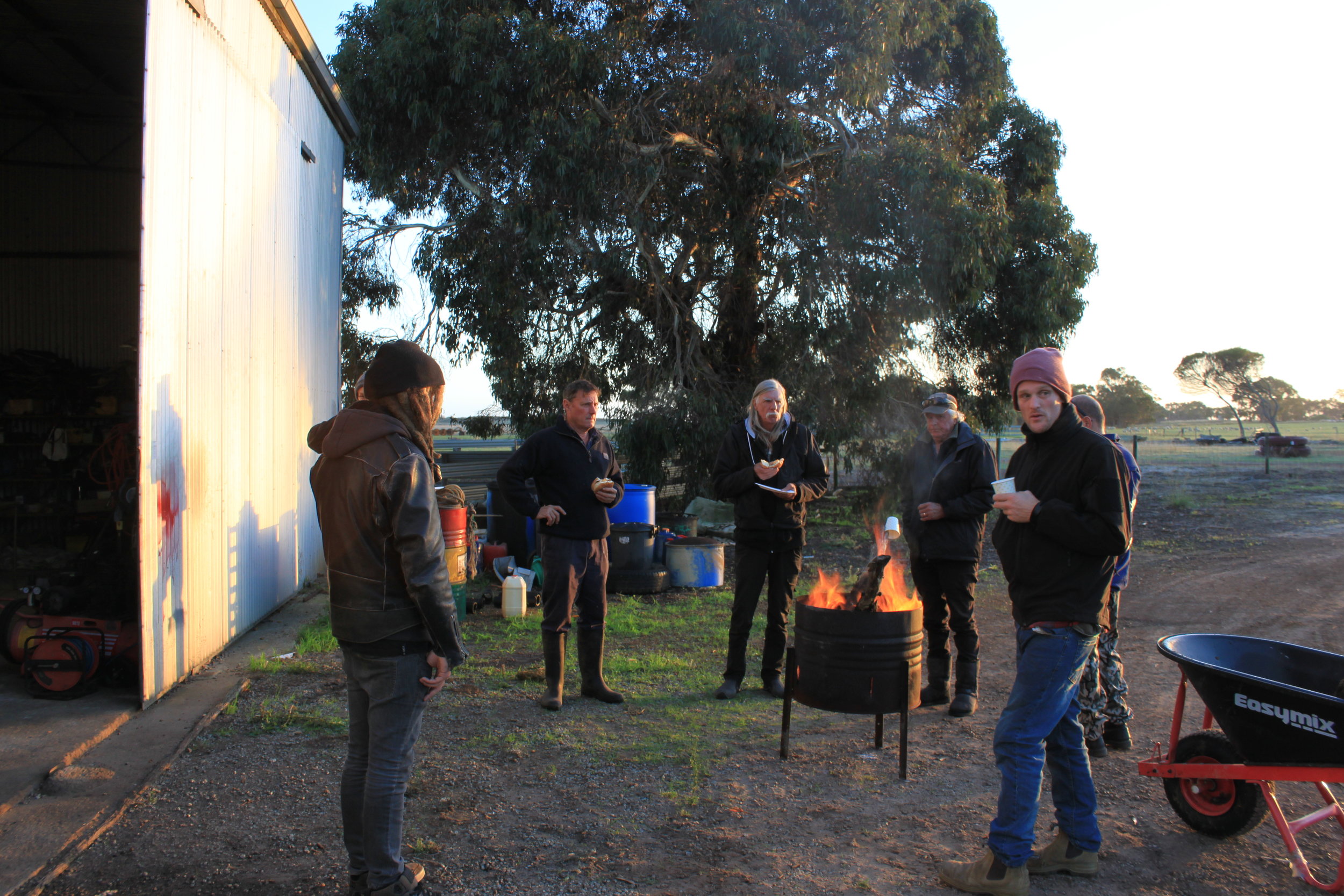
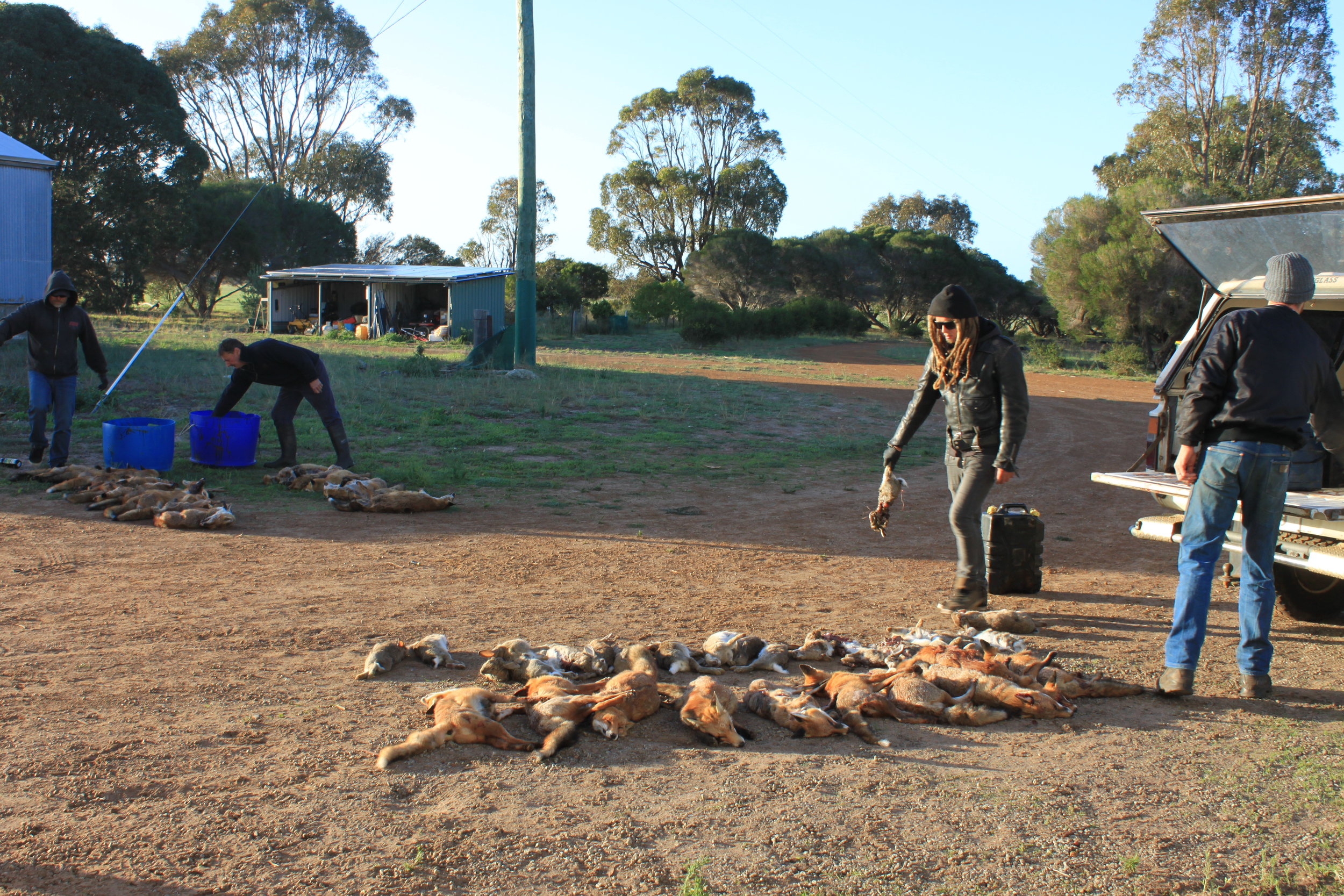
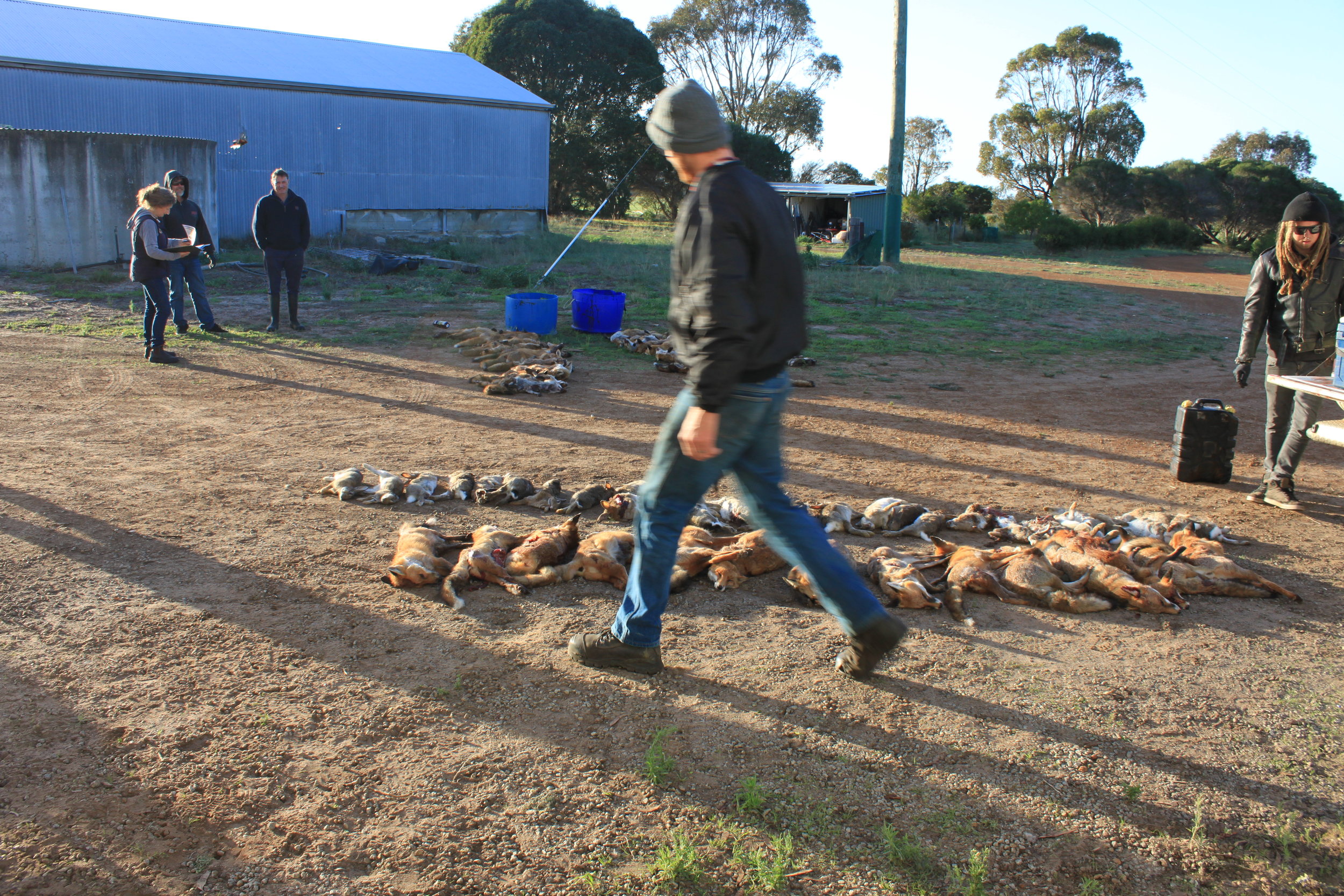
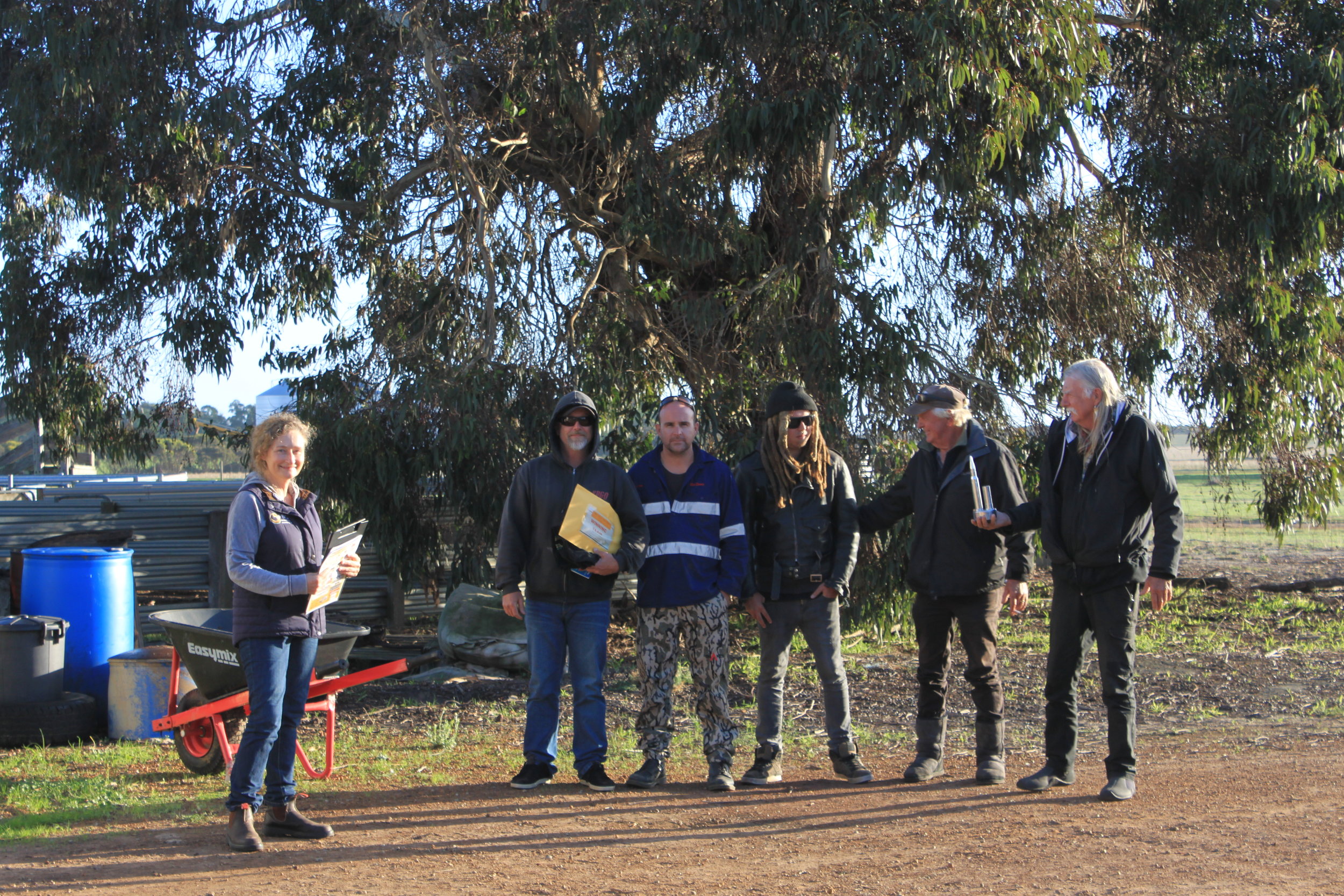
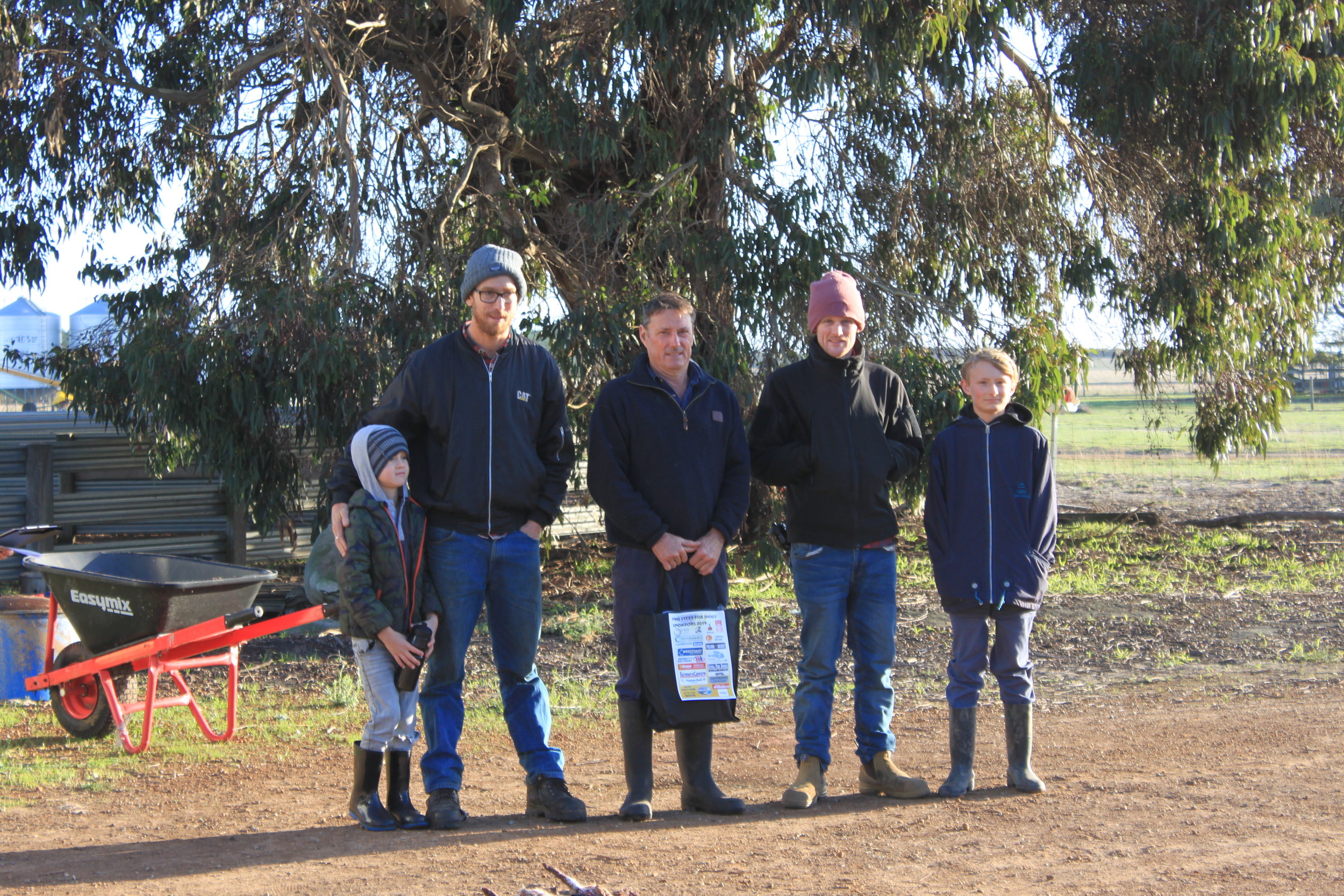
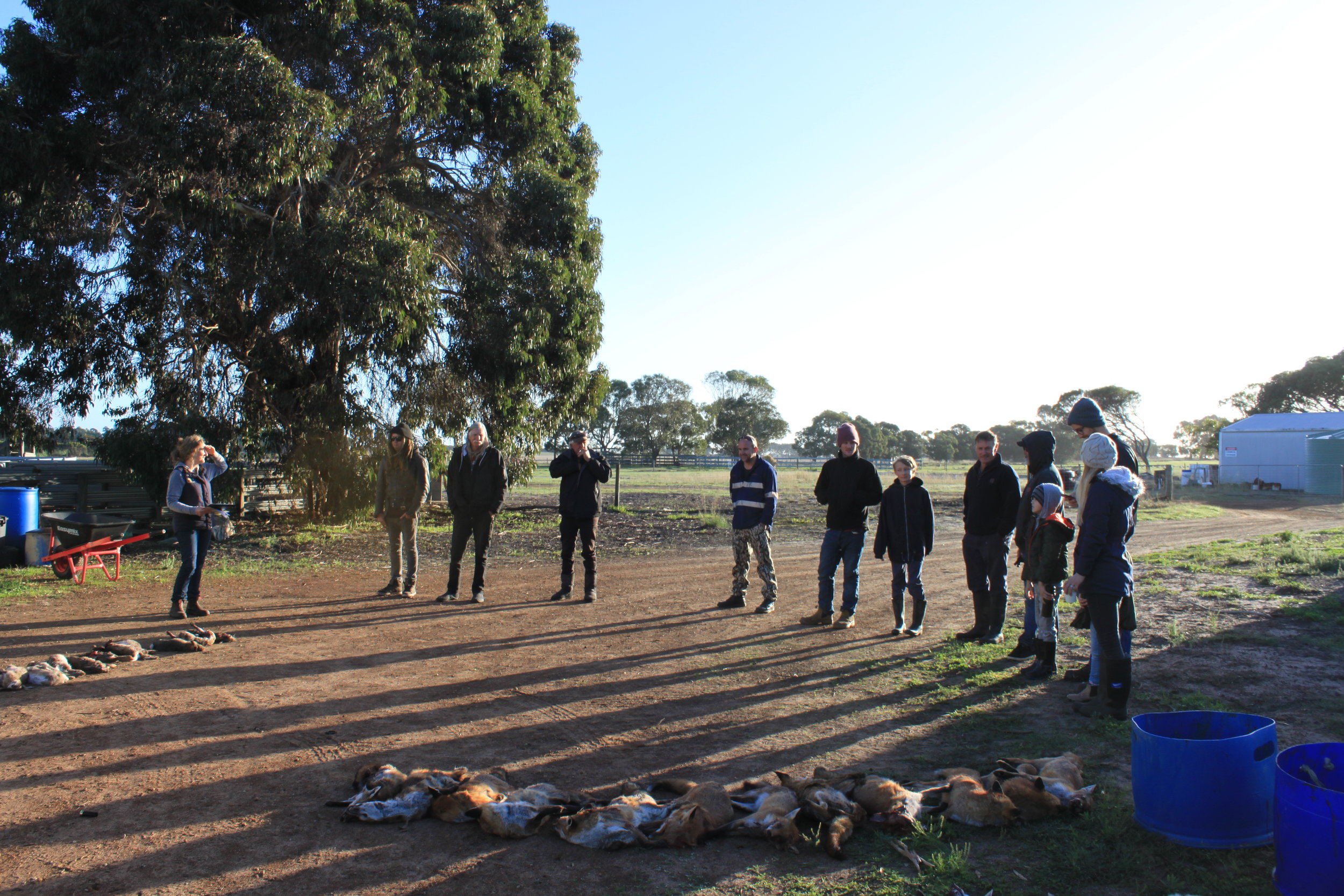
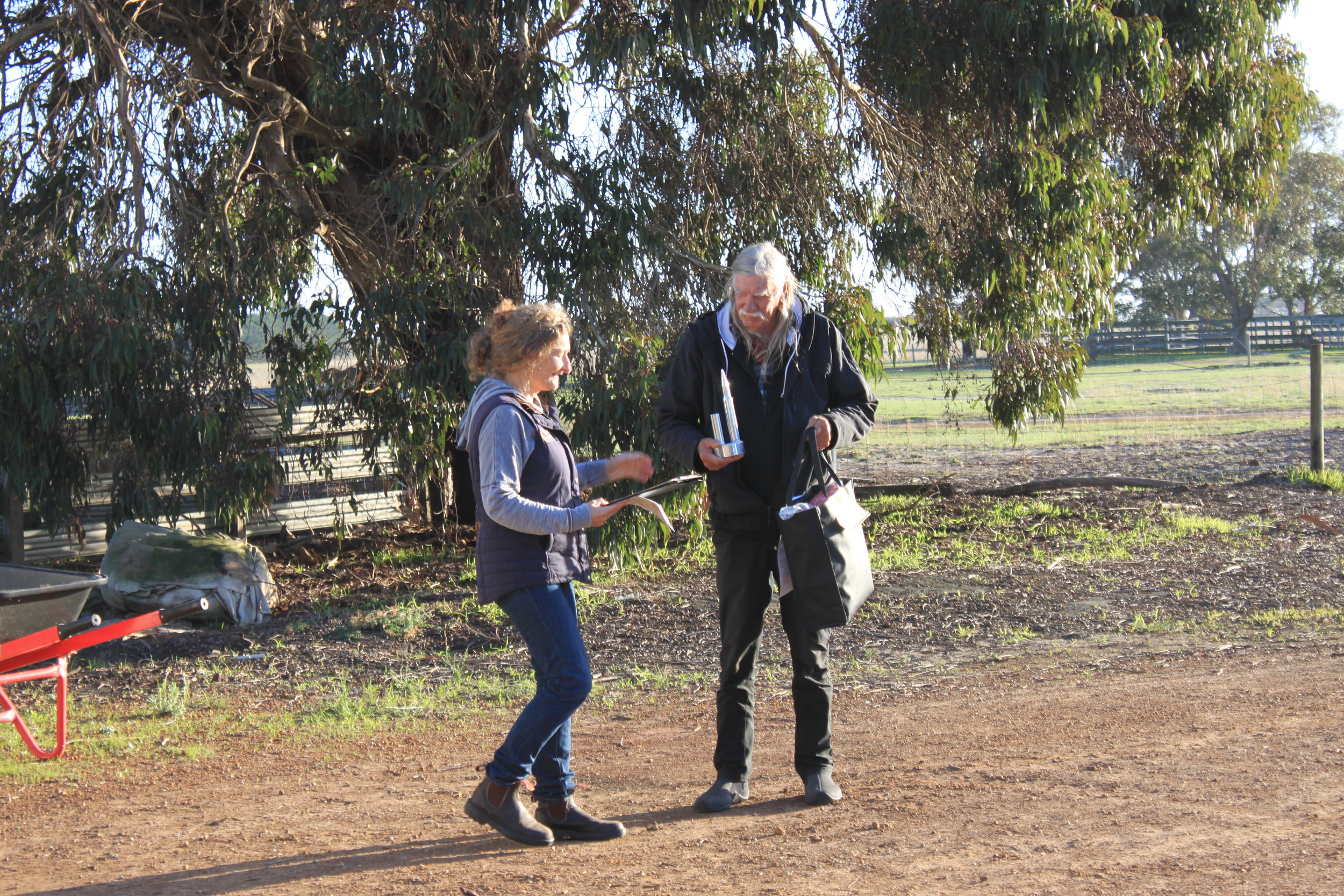
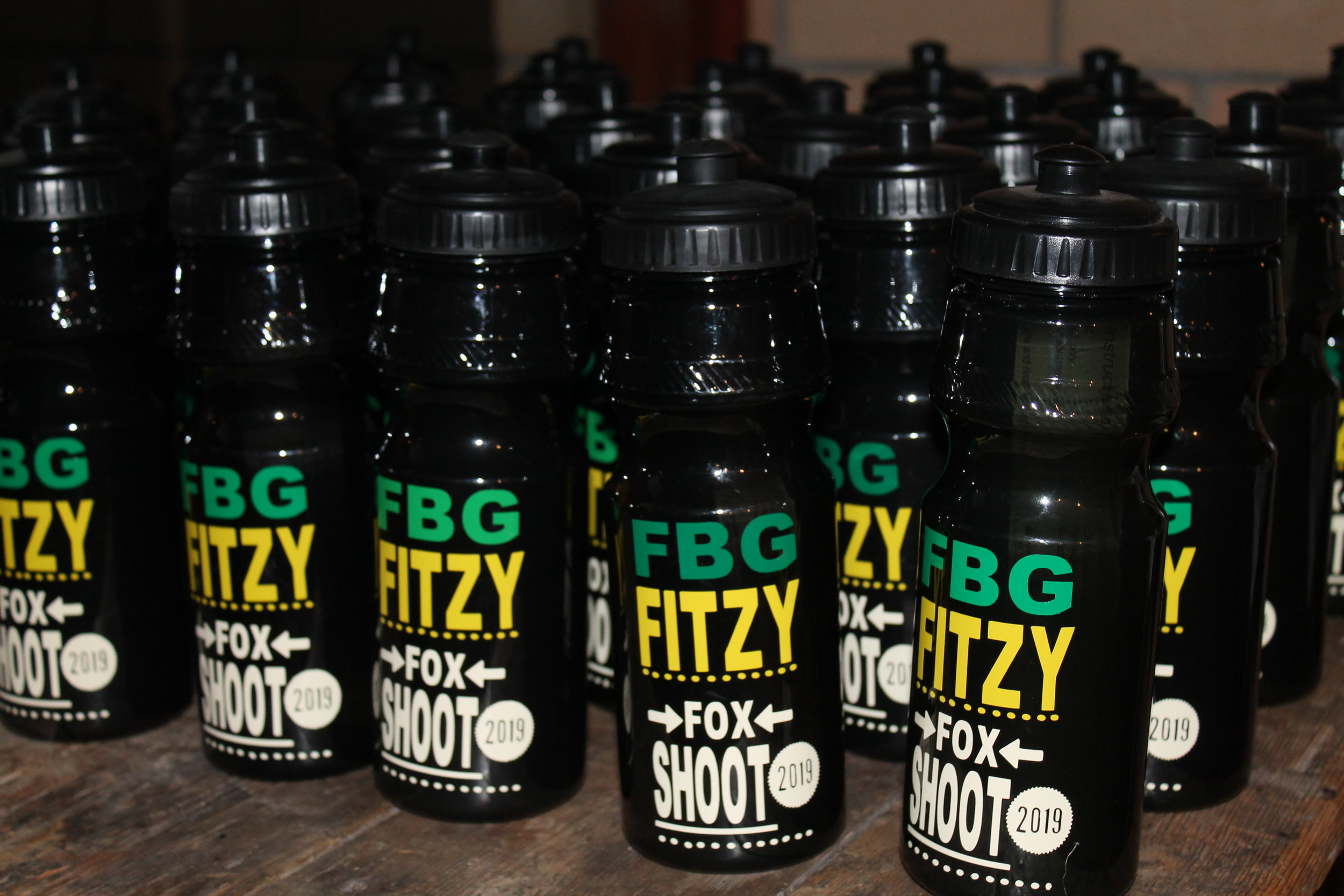
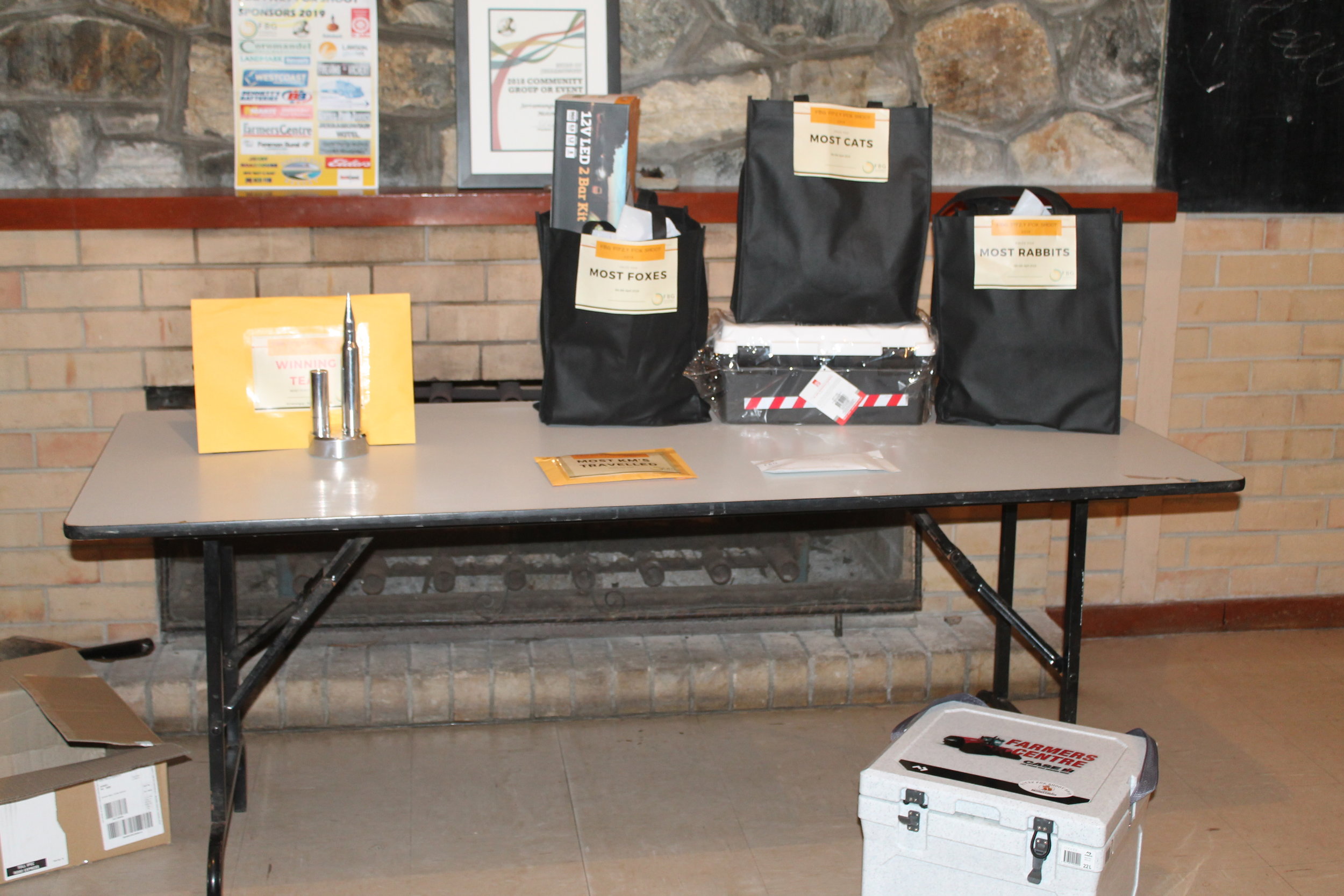
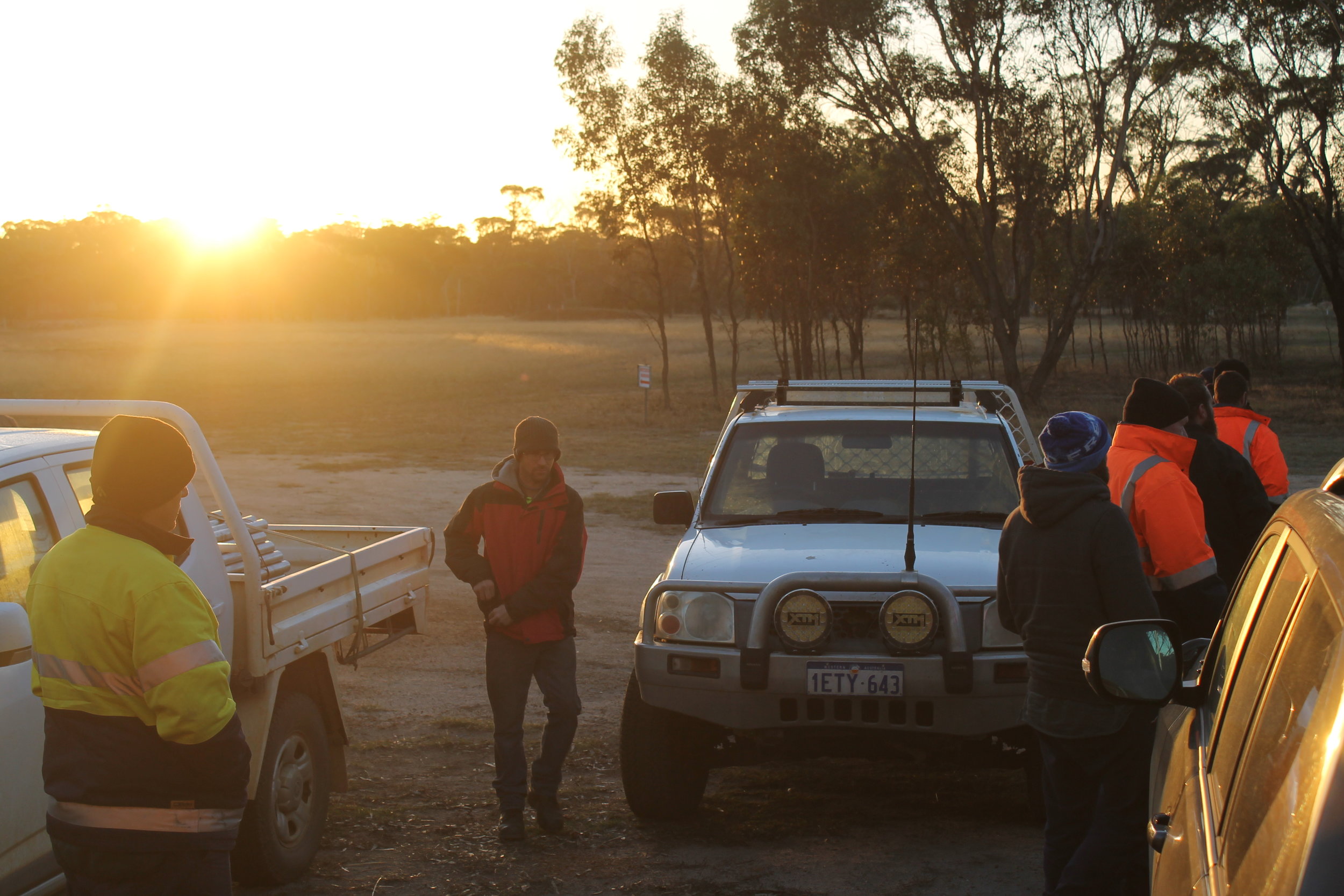
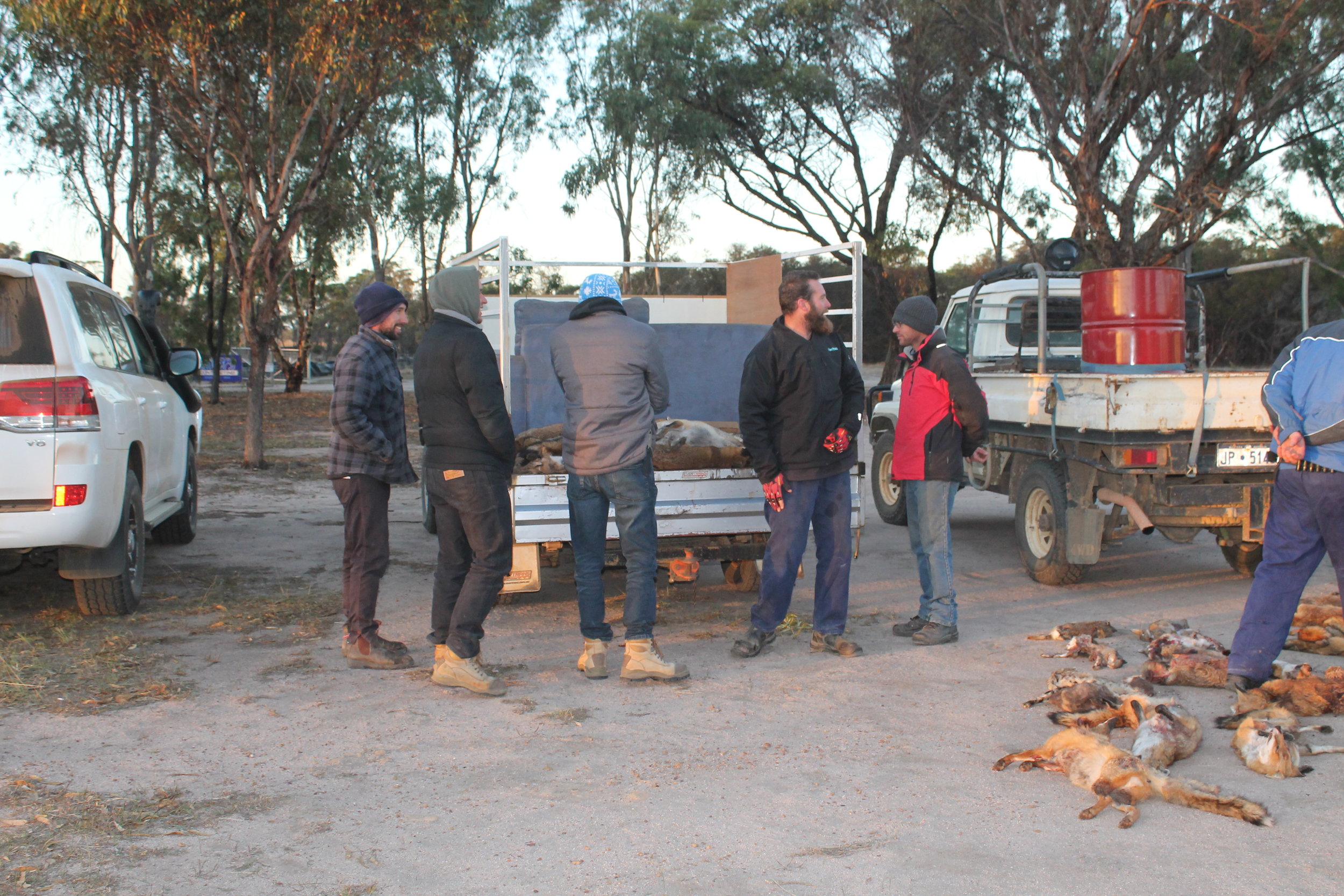
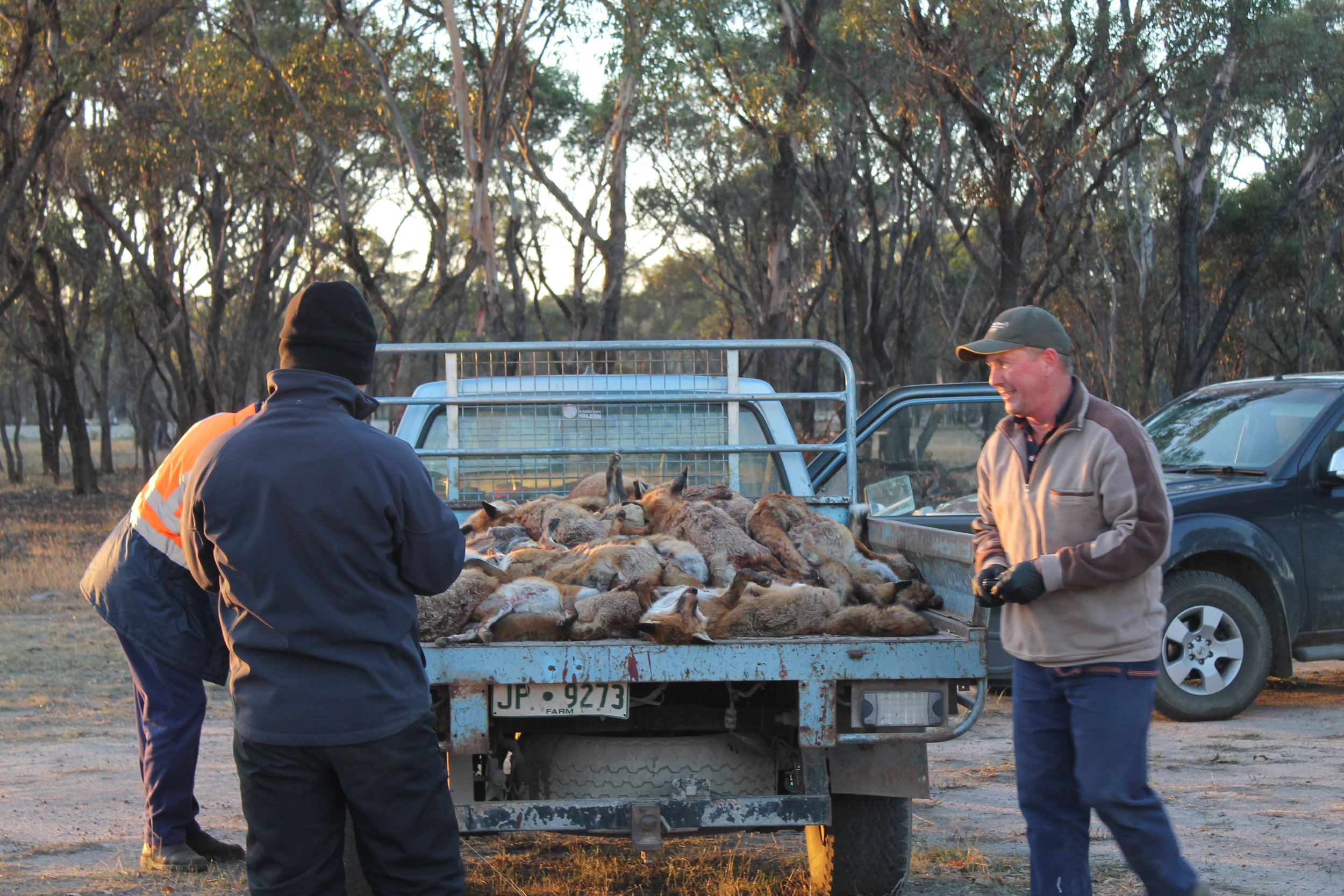
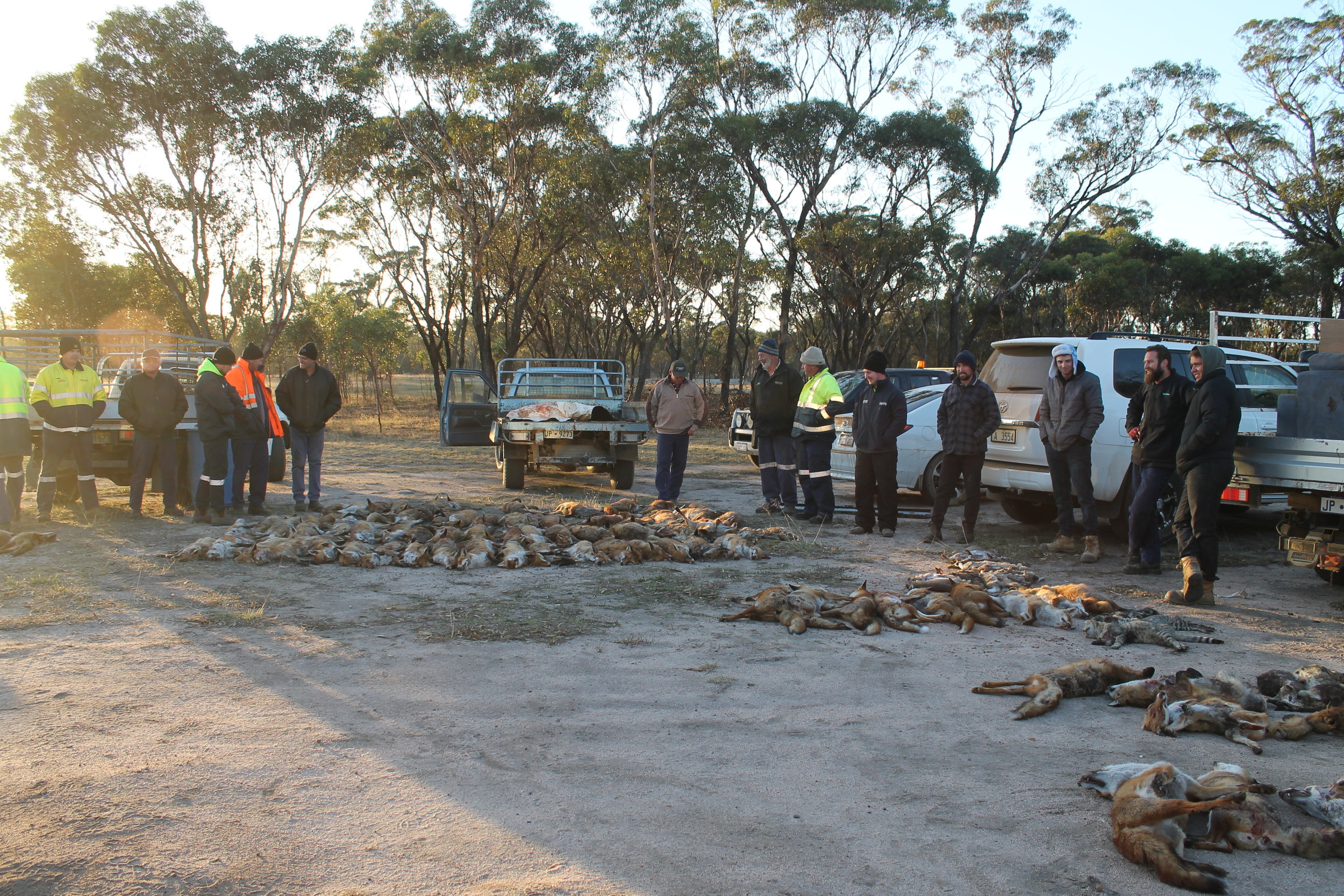
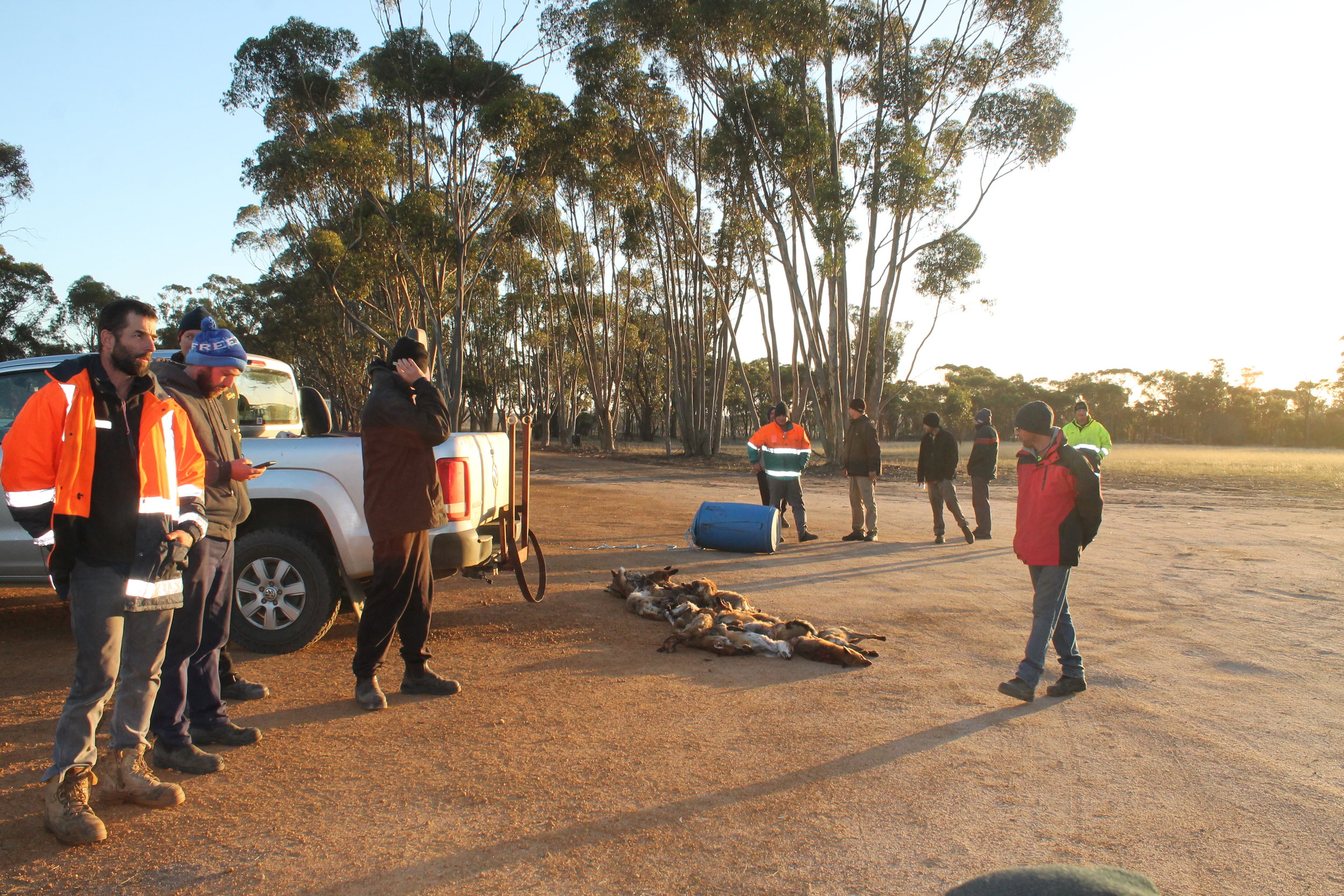
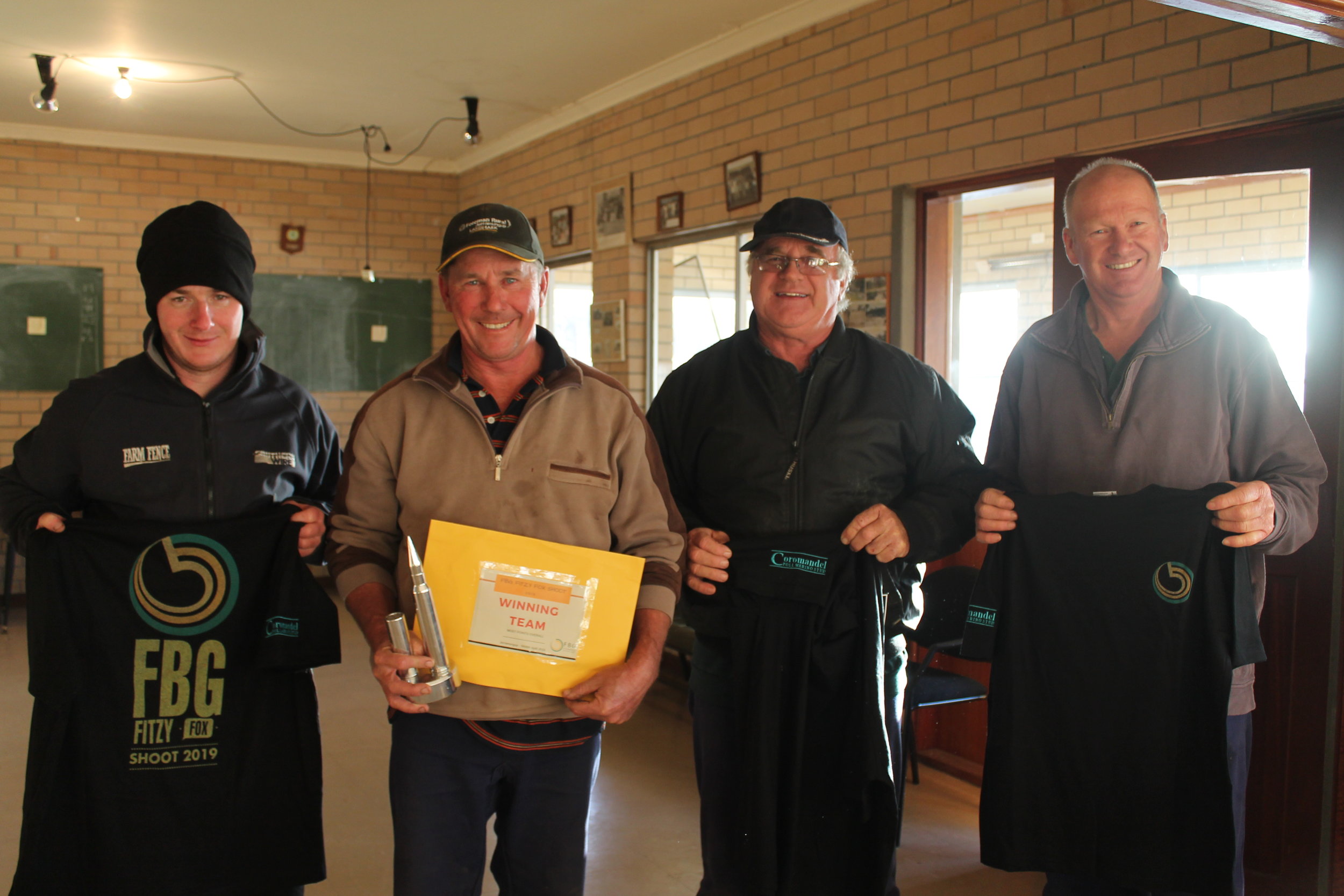
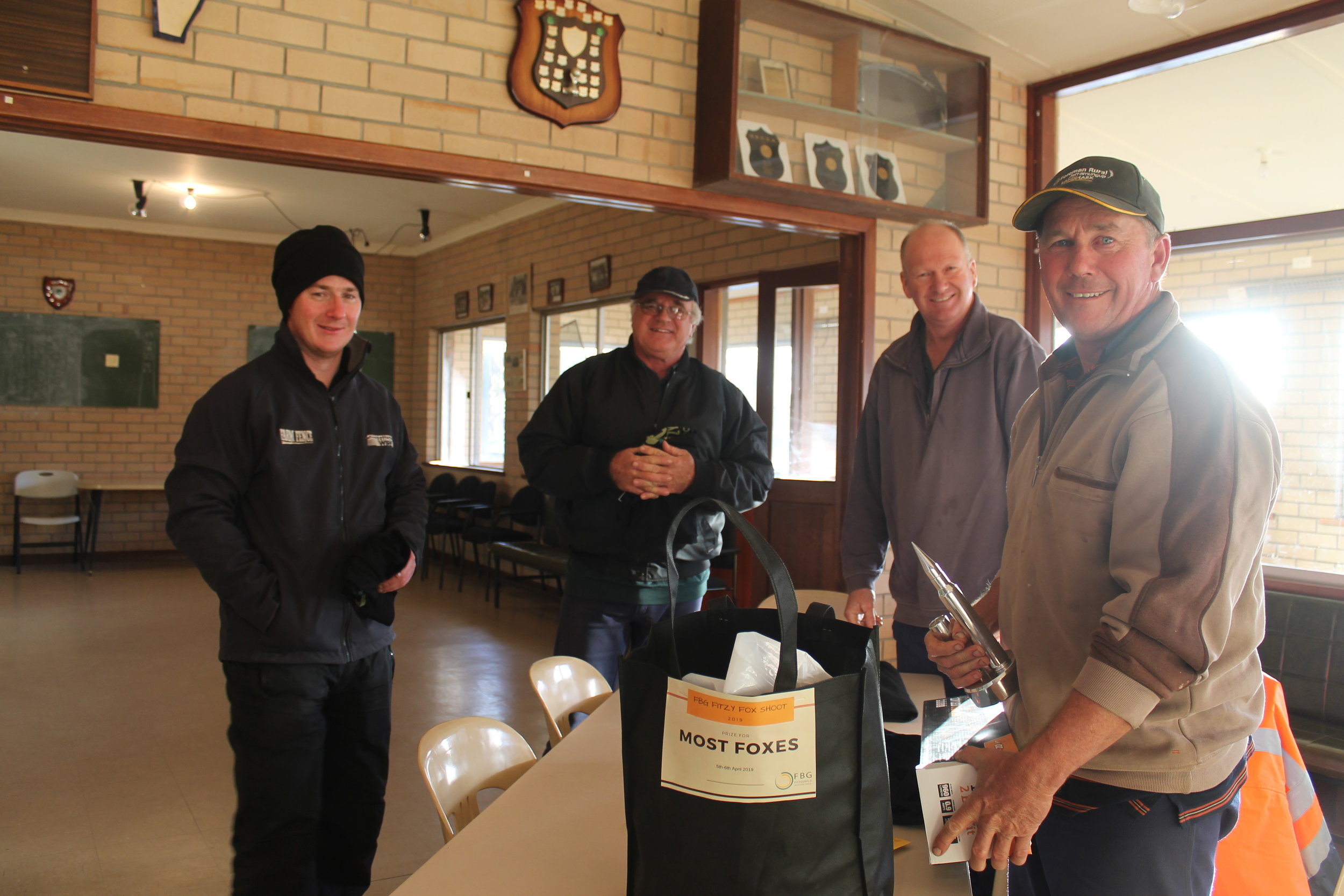
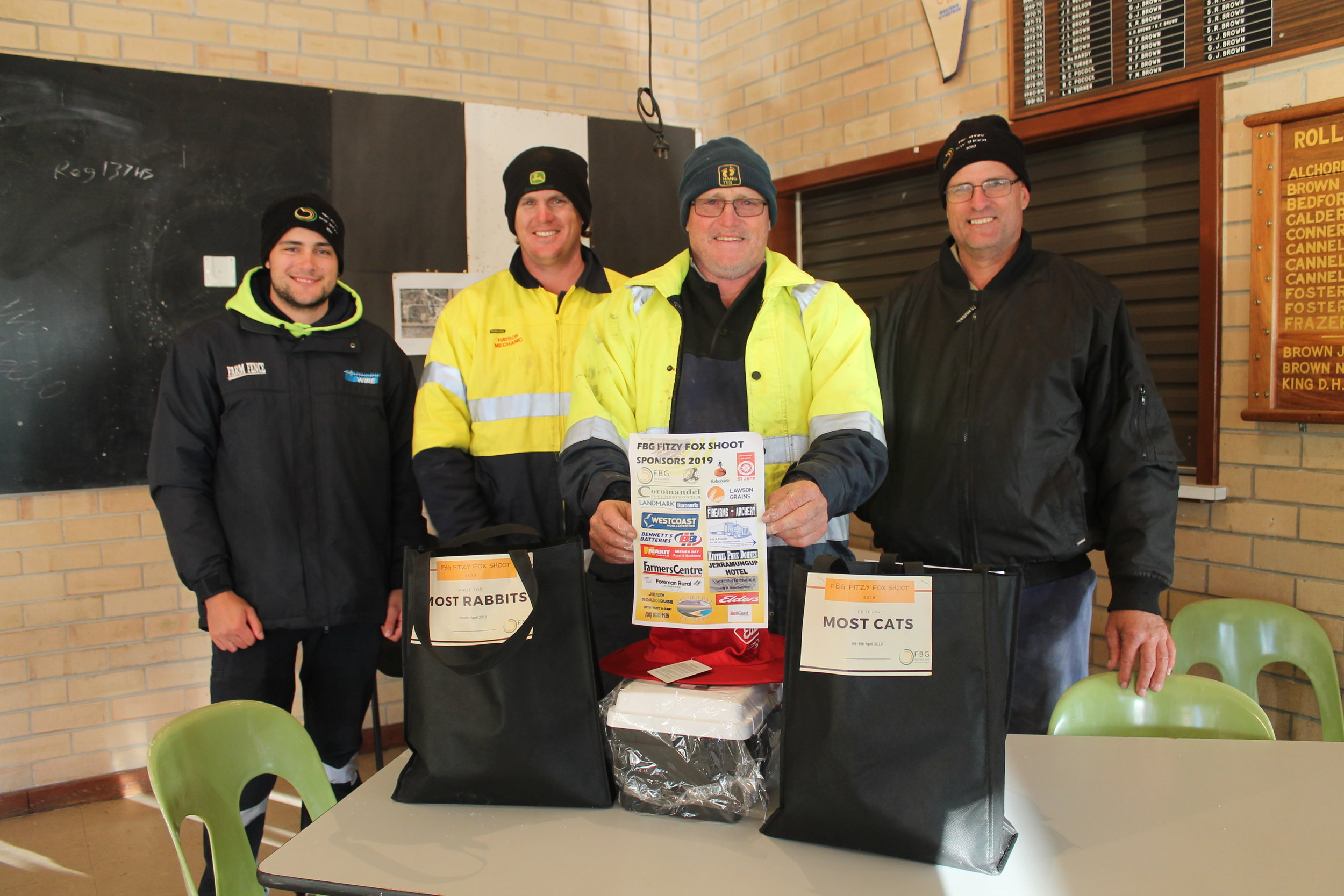
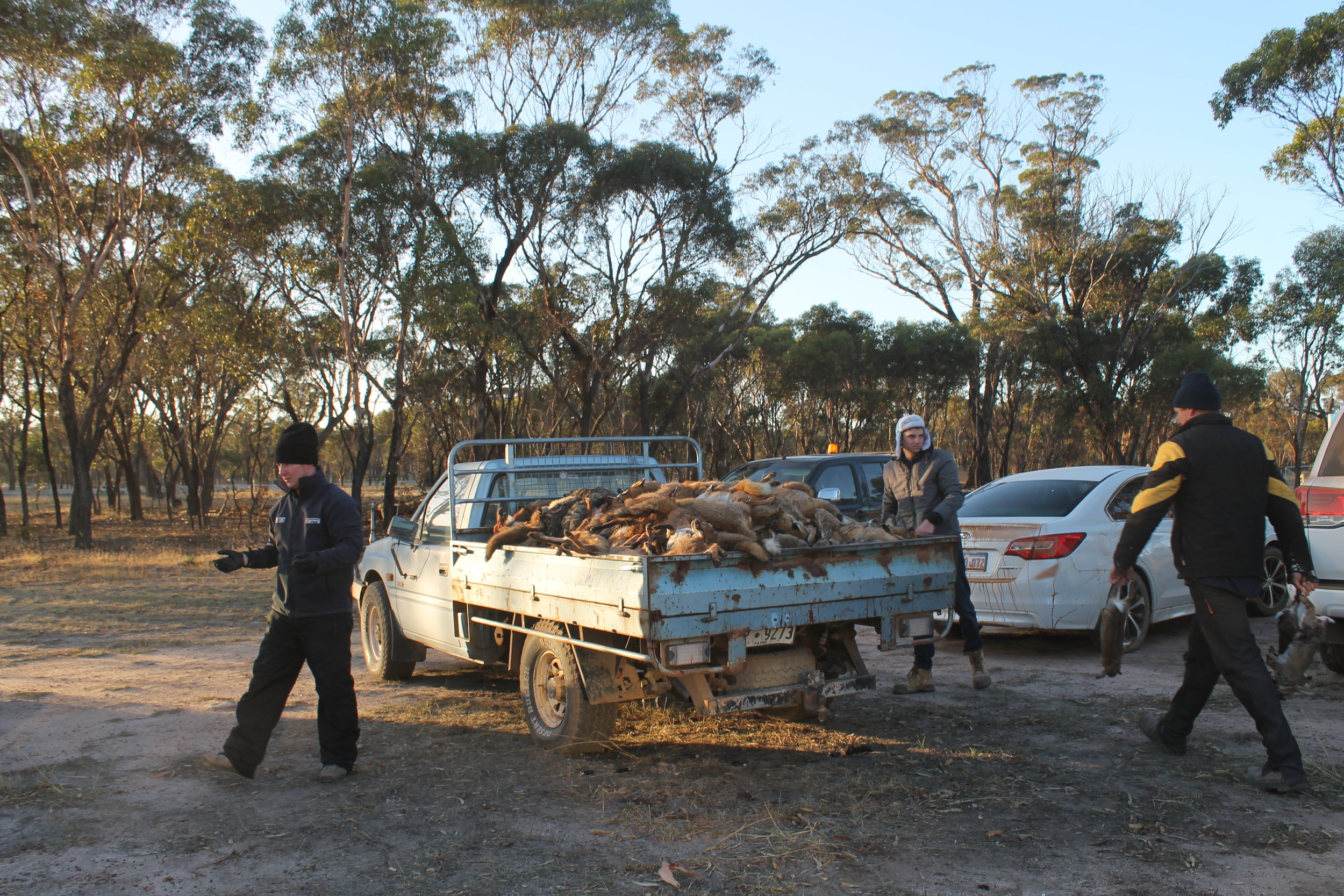
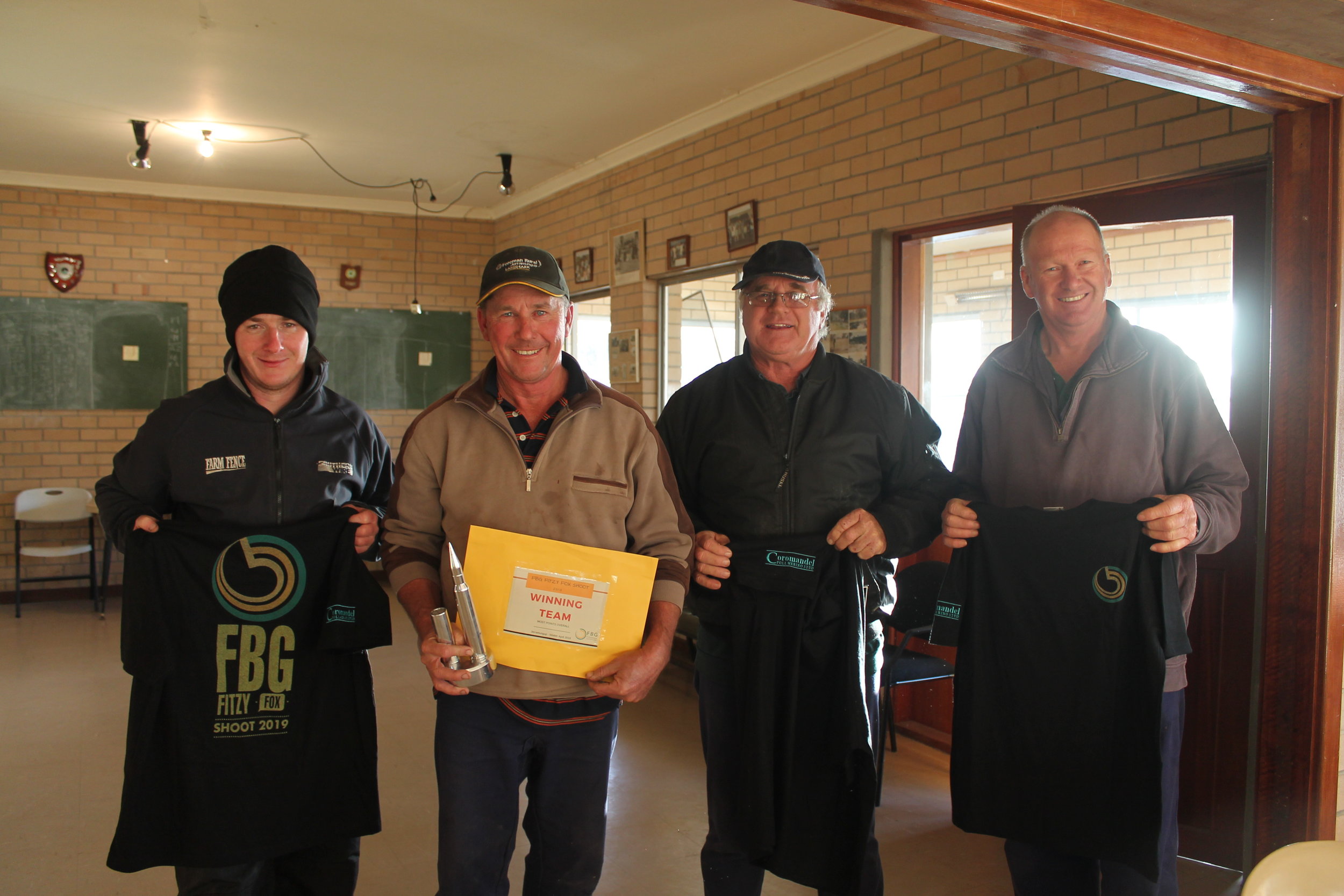


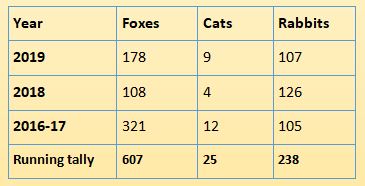
Rebuilding soils and optimising animal nutrition in dry seasonal conditions
On 18 and 19 March, FBG had the pleasure of hosting two excellent speakers – Col Bowey and Mark Emonson at two workshops, the first focussing on cattle (thank you to Craig & Nat Davis), and the second on sheep production (thanks to Paul & Melissa Barrett).
In response to last year’s challenging season, FBG was able to run this workshop thanks to the State NRM Program and extend this to our area’s livestock farmers.
The workshops were topical and thought provoking, with some different ideas broached to challenge the participants and provoke discussion. There were a couple of (very) brief take-home messages which certainly don’t convey what an interesting couple of days we were lucky enough to partake in.
On 18 and 19 March, FBG had the pleasure of hosting two excellent speakers – Col Bowey and Mark Emonson at two workshops, the first focussing on cattle (thank you to Craig & Nat Davis), and the second on sheep production (thanks to Paul & Melissa Barrett).
In response to last year’s challenging season, FBG was able to run this workshop thanks to the State NRM Program and extend this to our area’s livestock farmers.
The workshops were topical and thought provoking, with some different ideas broached to challenge the participants and provoke discussion. There were a couple of (very) brief take-home messages which certainly don’t convey what an interesting couple of days we were lucky enough to partake in.
· Farmers need to maximise food production and chase dollars per hectare by boosting livestock numbers (in response to more food grown);
· There are valuable lessons to be learnt from the cropping sector in maximising water use efficiency and making the most of every mm rainfall.
· In a dry year such as 2018:
o The importance of being proactive is highlighted;
o Value your groundcover;
o Know when to pull animals off a paddock;
o Traditional ‘cropping’ (knife points and draper fronts) are generally not well suited to livestock production in dry years.
For more information, contact Maddy Wylie on 0421 645 410
2018 FBG Spring Field Day
Our Spring Field Day for 2018 was held at Jacup and had a focus on deep ripping.
Our Spring Field Day for 2018 was held at Jacup and had a focus on deep ripping.
We started the day at the Jerry CRC with a market update from Rabobank, before heading out to Brad Bailey’s to look at his air seeder demonstration site, part of our One Paddock Challenge (supported by State NRM).
We then heard from the Hassad team and looked at some of their break crops, before hearing from Mark Seymour, DPIRD Esperance who gave us insight into suitable break crops for the Jerramungup Shire.
We then travelled out to Stu Bee’s to look at a deep ripping site coordinated by Glenn McDonald, DPIRD Albany, as part of the GRDC-funded Sub Soil Constraints project. This was interesting to compare to farmer-led ripping trials on Mick & Mark Lesters farm.
After lunch provided by the Jerramungup DHS P&C, we had a very interesting presentation from Brad Jones, Bungulla Farming who bases his decision making on available farm data and focuses on minimising inputs for a variable climate.
Our focus for the day was on deep ripping so after being updated on the GRDC Tactical Break Crop project, we moved onto Stu Bee’s farm where we looked at a soil pit dug on a site that had been originally deep ripped in the very wet 2016. In that year, it was too wet for the soil structure to support the deep ripping trial and it was abandoned in that year. This year, it has been revisited by Glenn McDonald, DPIRD Albany, as part of his soil research activities in the port zone.
His presentation sparked plenty of discussion, and this led into our Farmer Panel where Brad was joined by FBG treasurer, David Turner, along with host farmer, Mark Lester, and long term Needilup farmer, Bill Bailey. This session was well-received by our audience and led into our Sundowner kindly sponsored by CBH Jerramungup.
We would like to thank all our host farmers, our sponsors, Rabobank, our funding partners, State NRM and DPIRD (and in particular Mark Seymour and Glenn McDonald for your well-received and informative presentations), our caterers, JDHS P&C, industry representatives, and especially our attending farmers. We hope to see you next year, and if you have any burning issues or ideas for presenters, we would love to hear from you.
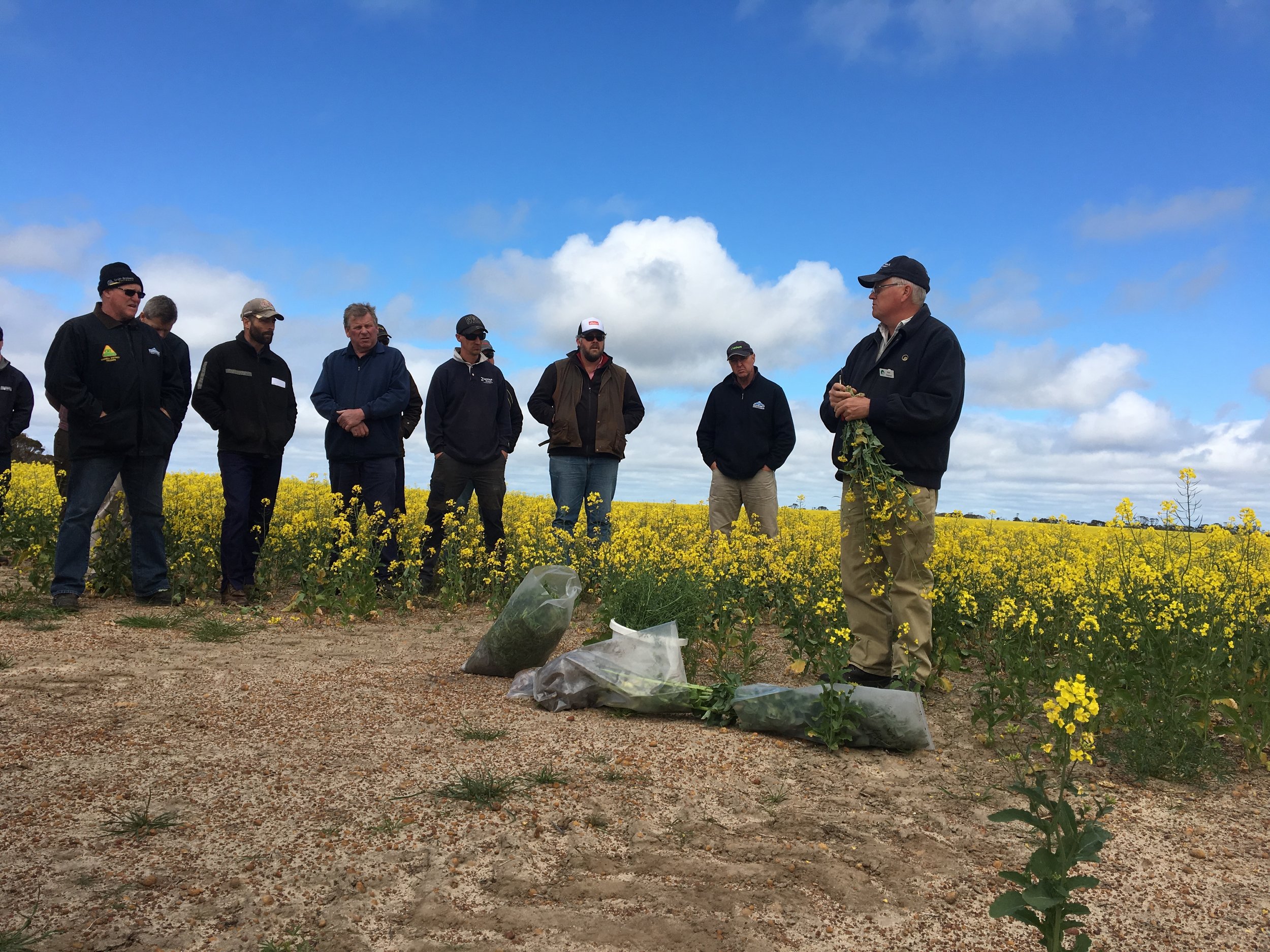
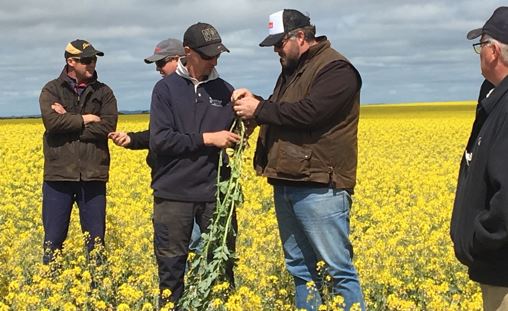
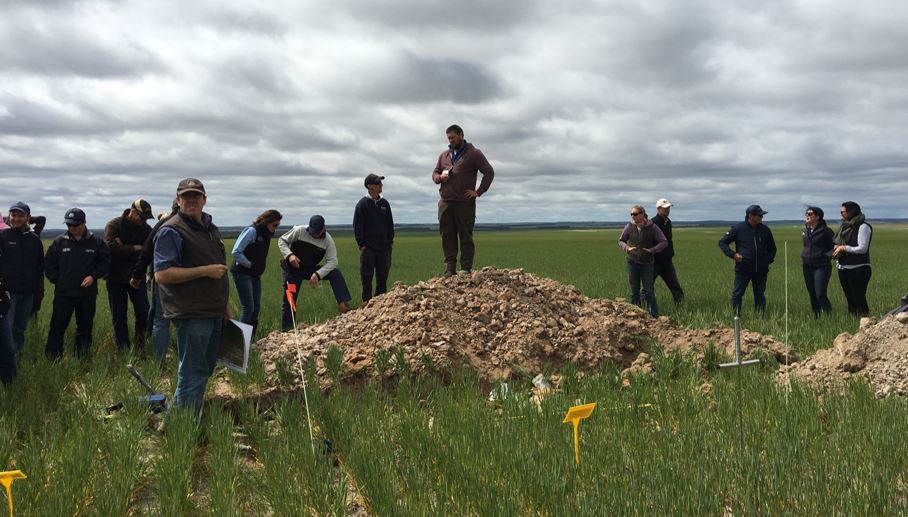
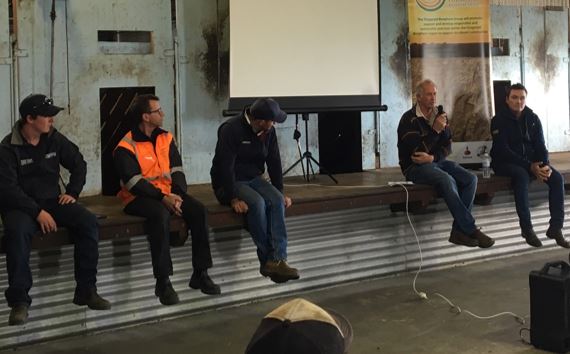
2018 Fitzy Fox Shoot
On Friday the 6th of April 2018, fifty five people between Jerramungup and Bremer Bay headed out to aid in the management of our local feral animal population.
On Friday the 6th of April 2018, fifty five people between Jerramungup and Bremer Bay headed out to aid in the management of our local feral animal population. In Bremer Bay, bright moonlight aided the foxes more than the shooters while in Needilup, it wasn’t long before the fog had rolled in, making it difficult for teams to spot many feral animals. But they didn't give up! Many stayed out until the fog had cleared and it was time to head in for the tally count and a cooked breakfast sponsored by Lawson Grains. The first 50 people to register also received a complimentary Fitzy Fox Shoot travel mug sponsored by Coromandel Poll Merino Stud. A total count of 108 foxes, four cats and 126 rabbits were culled between Jerramungup and Bremer Bay over the one night.
The winning team from Jerramungup was —Fox Tamperers. Wade Brown, Jeremy Nelson, Ashley Nelson, Pete Daniel, James Lyall and Michael Curtain finishing with a total of 137 points.
Prize for most foxes went to– Fox Tamperers with 21 foxes.
Prize for most cats went to– One Shot Wonders with three cats.
Prize for most rabbits went to– Fox Tamperers with 32 rabbits.
Most kms travelled went to– Motley Crew with 276.9kms.
Prize for the smallest rabbit went to– Smith, Warner and the Ball Scratcher.
The winning team for consecutive years from Bremer Bay was- Texas Heart Shooters. Paul Reddington, Peter Buckenara, Reuben Small, Paul Spinks and Murray Davis finishing with a total of 88 points.
Prize for most foxes went to– Texas Heart Shooters with 17 foxes.
Prize for most rabbits went to– Texas Heart Shooters with three rabbits.
Most kms travelled went to- Texas Heart Shooters with 130kms.
Since no cats were shot in Bremer, we had a second prize for overall points, which went to Inaccurates and a third prize which went to Wes’s Warriors.
Once again we teamed up with Red Card for Rabbits and Foxes, which is a community based feral animal management program that operates across the agricultural regions of Western Australia. Red Card has teamed up with the Sporting Shooters Association of Australia WA who will be donating $5 for every cat and fox culled (to a capped amount) to the Regional Men's Health Initiative.
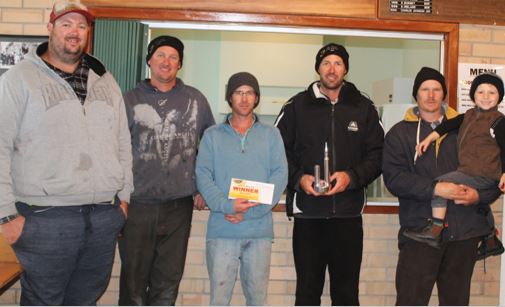
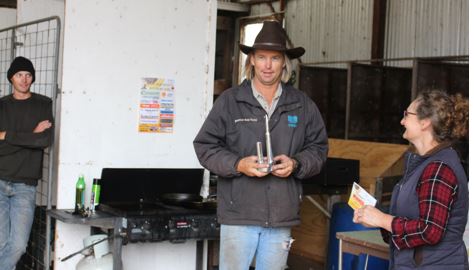
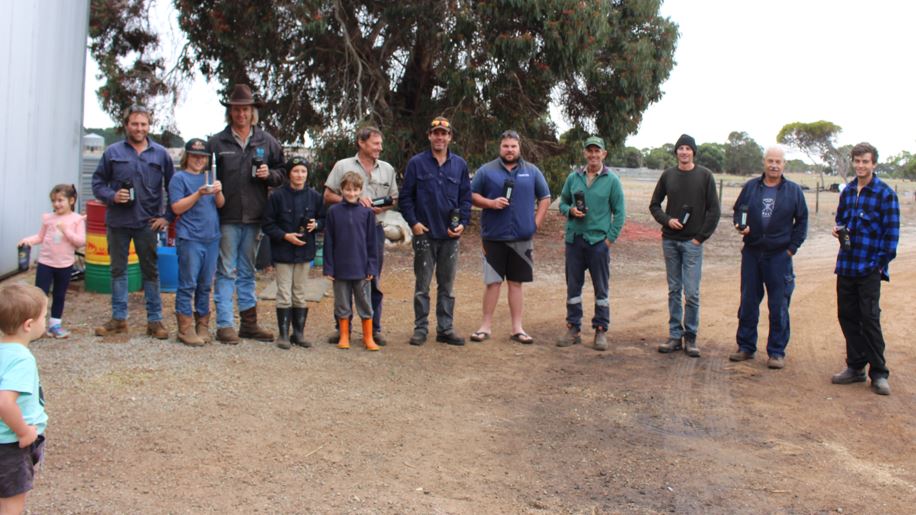
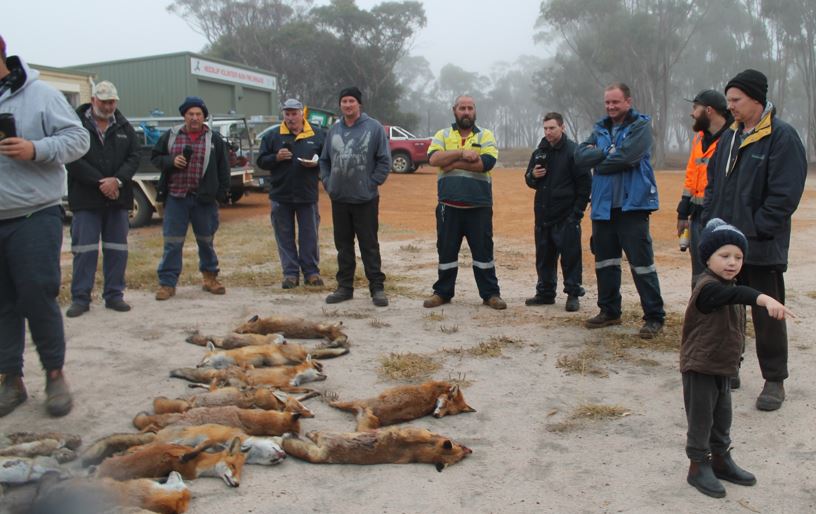
Low stress stock handling training
A fresh perspective on an age-old practise was offered at the low stress stock handling course held in Needilup in March.
A fresh perspective on an age-old practise was offered at the low stress stock handling course held in Needilup in March.
The course could have been more aptly named ‘advanced’ rather than ‘low stress’ stock handling. Most of the 27 participants have many decades of stock experience behind them. The trainer, Grahame Rees from Low Stress Stockhandling, put a different spin on that accumulated knowledge.
The concept behind the training is that you work with the natural instincts of herd animals to get them to stop when you want them to stop and move when you want them to move, by applying pressure in the right places.
The four basic instincts we worked with during the two days were:
Animals move in the direction they are facing
Herding animals want to follow other animals
Animals want to see what is pressuring them
Animals want to have pressure released
Whilst these behaviours are no doubt familiar to anyone who works stock, the more challenging element of the training was to adopt new ways of interpreting and using them, whilst letting old habits or interpretations go.
We learned:
The flight zone is the region in which pressure causes an animal to react. Identify it, respect it and learn to use it.
Every mob has a lead, a middle and a tail and this will constantly reform. Pay attention to the lead animal – the best and/or the worst in the mob. She is the one with the largest flight zone and the most panic movement. Work her first. We have a tendency to work the back animals but they are the ones with the smallest flight zone.
Animals won’t choose to come into your flight zone. When you move into theirs and apply constant pressure they either run away or fight (move into the pressure).
The ubiquitous poly pipe was jettisoned from the yards. Whilst it offers a sense of (false) security to us, from a herd animal’s perspective, if you are close enough to use it, you are within its flight zone and therefore applying constant pressure. Its instinct will be to either run away (which it can’t do in the yards) or fight. Be aware that an individual’s flight zone may extend outside of the yard it is in.
When pressure is applied it must be released. When the animals move correctly, reward them by stepping back.
Those stragglers at the back of the mob drop not because they are weak, but because of constant pressure.
Conversely, if an animal stops and looks at you, you are either too far in behind it (and it can’t see you so it is stopping to check where you are) or too far away (in which case the animal is giving you permission to reduce the flight zone).
Body language is the strongest form of communication with an animal. The way your body faces is important. Be mindful that your face radiates the most pressure. Use it wisely!
The yards rang with new language. Surprisingly clean! By the end of the course we were working in the ‘push’, ‘retard’ or drift’ zones of an animal’s eye, checking for ‘panic movement’ and getting stock to ‘bend off pressure’. Well, sort of.
We worked with both sheep and cattle and were advised to train mobs in the paddock before even getting them into the yards. Between the 27 of us, we well and truly trained Pete and Jolene Daniels’ mob of merino ewes to the point where they would even walk through a gate past a man leaning against one of the strainers (facing away from the mob). Grahame upped the ante with the last team to get the mob in – two people leaning on the strainer posts at either side of the gate - but that was a man too far according to the mob.
We have to thank Grahame Rees for a really valuable course and the FBG’s President, Jolene Daniel for initiating and persisting with the event. Special thanks to Jess Bailey, the FBG’s administrative officer, who handled all of the administration and worked hard to get so many registrations. Thanks also to Pete and Jolene Daniel for hosting the course at their place and supplying the sheep and to James and Sandra Lyall from Pingamup Creek for allowing us to work their cattle.
Leonie McMahon
2018 Farmer Updates
On Wednesday 7th March, FBG ran its annual Farmer Updates event, joined by 15 local farmers, and 15 industry representatives.
On Wednesday 7th March, FBG ran its annual Farmer Updates event, joined by 15 local farmers, and 15 industry representatives.
The afternoon was kicked off by Christine Kershaw and Ken Drummond, from Stirlings to Coast Farmers, who gave us an update on the Regional Cooperatives Pilot Program and where the project is headed next. Expressions of interest in being involved are being actively sought.
This was followed by an update on production in the Black Sea region delivered by Cheryl Kalisch Gordon of Rabobank, Orange NSW. She has an extensive background in the global grains industry and gave us a fascinating insight into the global trade, and in particular out of Eastern Europe.
Our agronomy update on the National Variety Trials and new products was delivered by the enthusiastic Kyran Brooks, agronomist with Foreman Rural, Landmark Jerramungup. This was followed by Stu Bee, who gave an insight into his One Paddock Challenge project: the investigation into whether vetch will produce enough natural N so that the subsequent 1-3 cereal crops do not require any synthetic fertiliser applications.
Following on from this, Andy Duncan, whose family farms in the West River area, but who is now a member of the GRDC Western Regional Panel, gave us an update on the strategic direction of GRDC investments, and provoked some interesting discussion from a few other audience members.
This discussion helped to stimulate some interesting topics in our farmer and speaker panel which came next. Unfortunately, a couple of the farmers who were due to take part could not attend on the day. However, it was an informative and thought-provoking session for all.
One of the topics brought up was how a couple of last years’ One Paddock Challenge trials had fared. In particular, Brad Bailey’s airseeder demo which had generated much interest amongst neighbours and those further afield. Alice Butler, DPIRD Albany, had some information on a similar trial conducted by a group of farmers at Toolbronup, and this will be covered in an article on pages 8-9 in this Sustainabulletin.
Finally, the day ended with some entertaining updates on ag technology from the very engaging Ben White and Josh Giumelli of Kondinin Group. Both had attended Agritechnica held biennially in Germany, showcasing upcoming technology in the ag space.
Thank you to all our members who attended, presenters, industry representatives as well as the day’s sponsors (thank you Foreman Rural for the sundowner). Your continued support of FBG events is much appreciated.
Maddy Wylie



